![]()
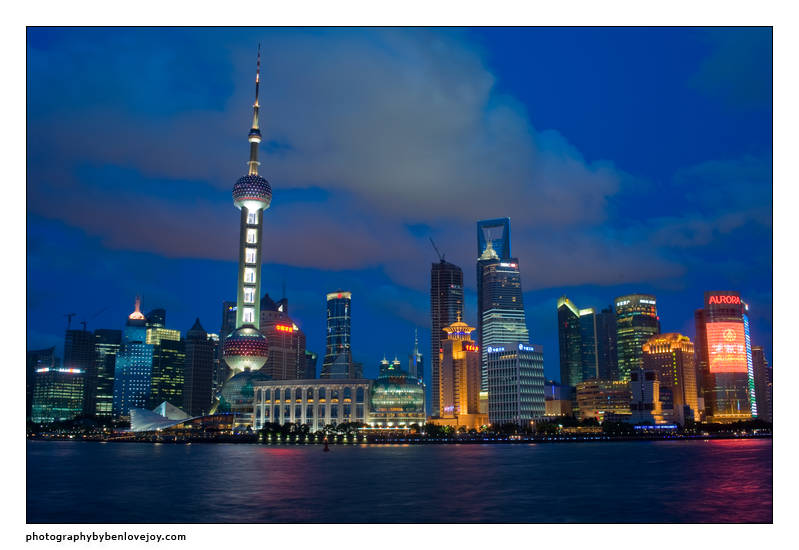
| Last time I was in Shanghai, my schedule was so packed I barely got to see anything beyond my hotel and the local offices. This time, I had two-and-a-bit days to explore the place a little. My hotel was a rather attractive building: |
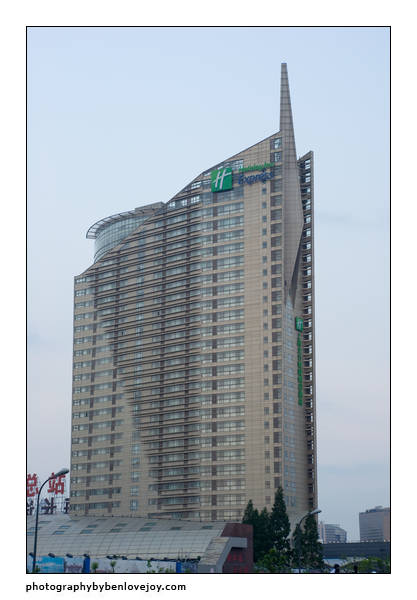
I always ask whether there's a room available on the top floor, and surprisingly often there is. Here's the view from my room on the 26th floor: |
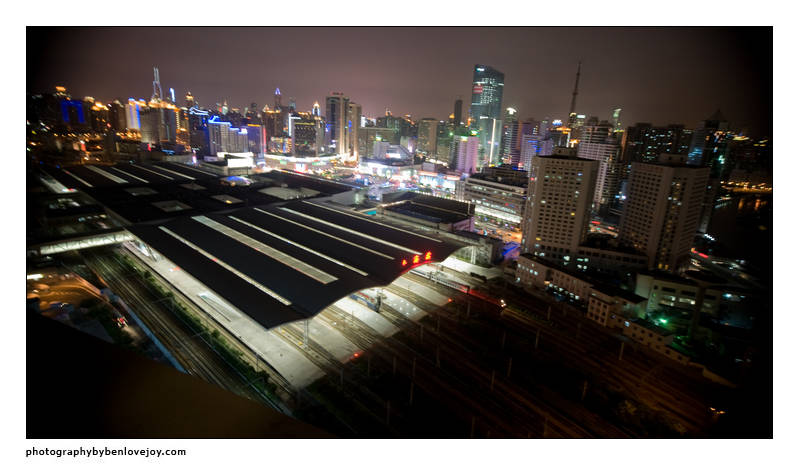

WednesdayOn the left is Shanghai Railway Station. I'd noticed what looked remarkably like Shinkansen (Japanese bullet-trains), so I headed down there to sample one. I checked the routes they served, and bought a ticket to the first stop, which was Shanghai West. To avoid congestion on the platforms, passengers are held in large waiting-rooms and tickets only become valid in the barriers about ten minutes before the train leaves. The system seems to work, but couple this with the complete lack of any sense of personal space found in China and things get a bit busy! |
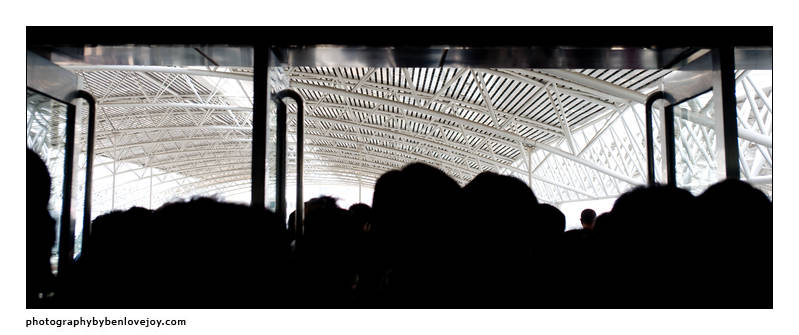
I couldn't resist a fake tilt-and-shift shot: train stations are made for them! |
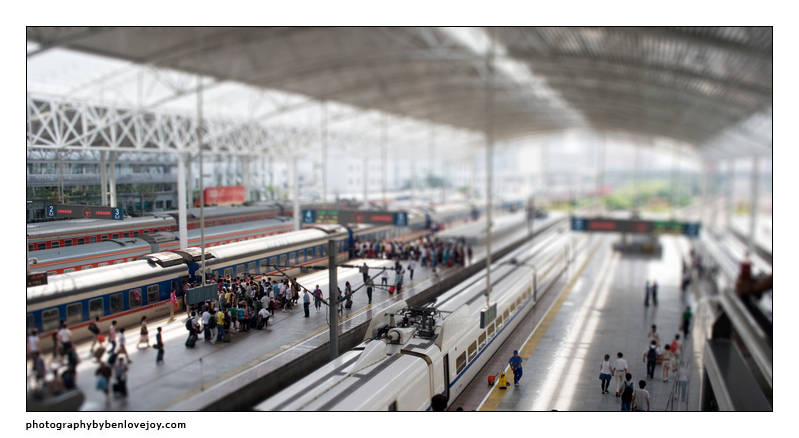
The express trains are indeed remarkably similar to Shinkansen: |
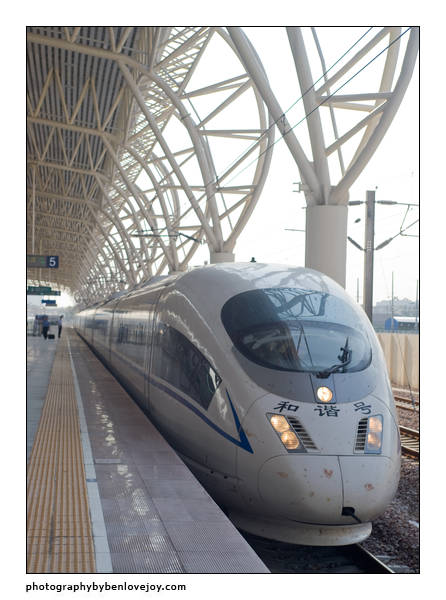
There were some more traditional-looking trains also:: |
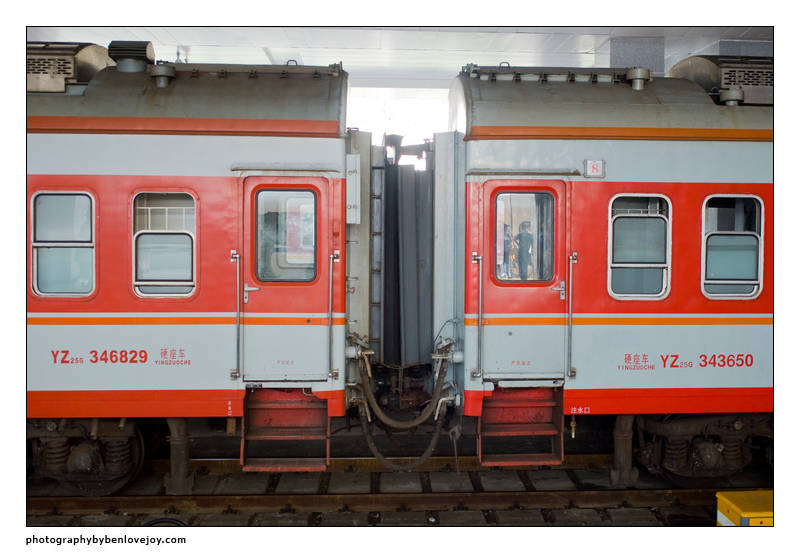
Shanghai West is a very modern-looking station: |

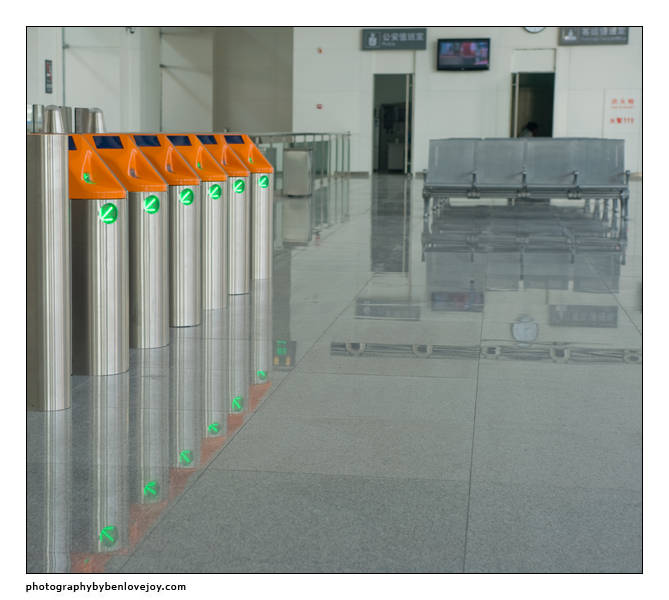
As the trip was just an excuse to go play on a train, I only had 20 mins there, so just a quick wander outside: |
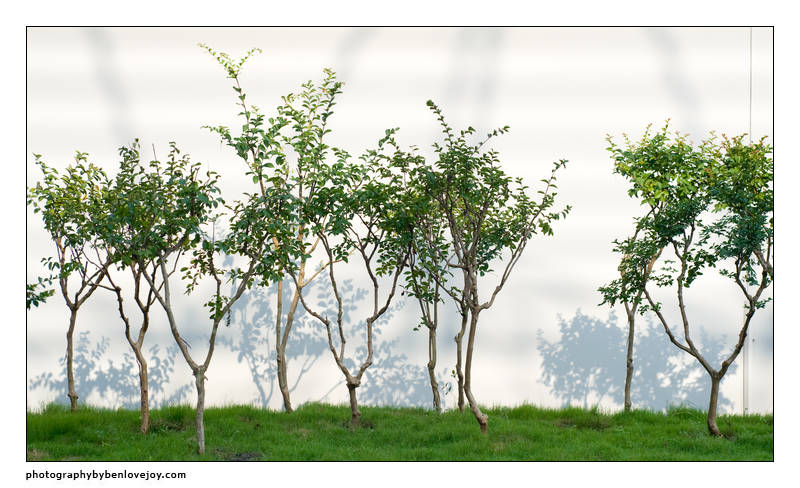
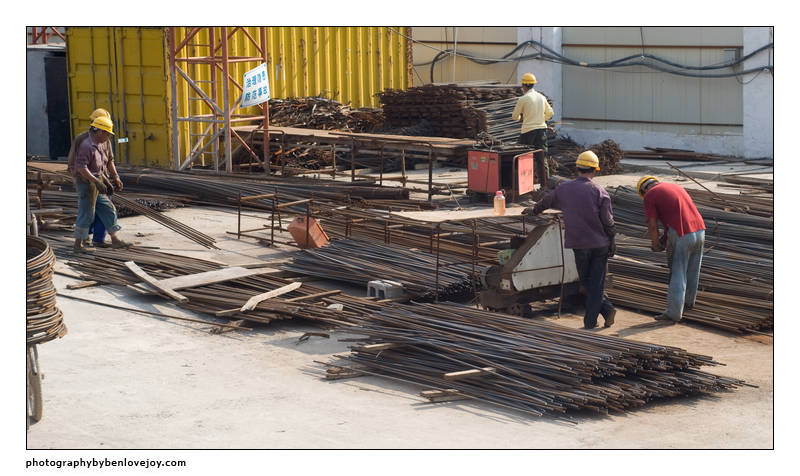
One thing China isn't short of is people, so the near-deserted station had not one but three police officers looking after it. One of them wanted to look at my camera, so I extracted the usual price: |
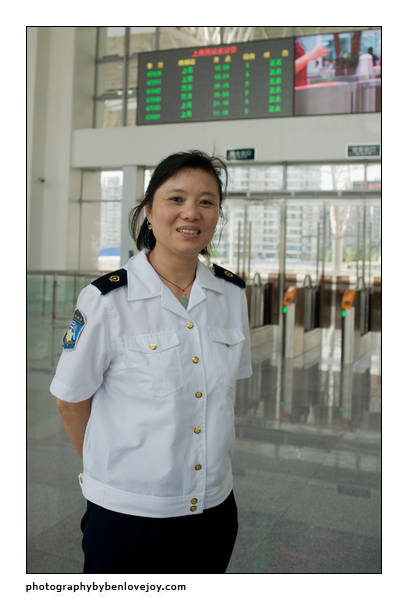
She then started fanning herself with a paper fan (clearly the excitement of meeting me), so of course that required a second photo: |
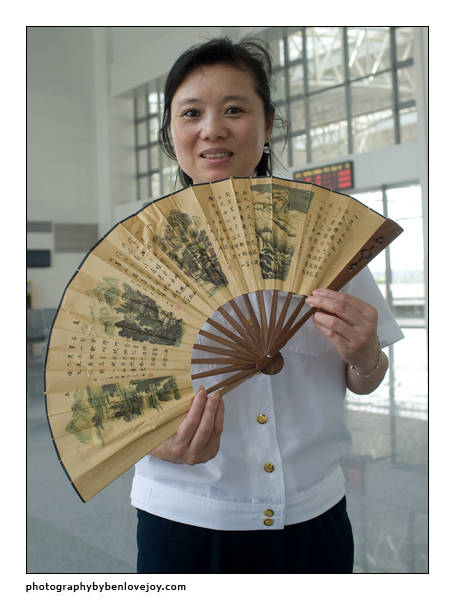
There were under-employed-looking people everywhere:: |

As my train display turned from red to green, meaning my ticket would now allow me through the barriers onto the platforms, I got up and walked towards the barrier. "Please wait!" called one of the policemen. A cop asking you to stop is not usually a good thing, but in this case it was: having had the opportunity to note my complete lack of Chinese vocabulary (beyond Hello and Thanks), he decided I couldn't be trusted to my own devices and escorted me to my platform, showing me where to stand for the carriage I wanted for my reserved seat! I somehow can't imagine getting this service at Kings Cross ... Then it was onto the Metro: |
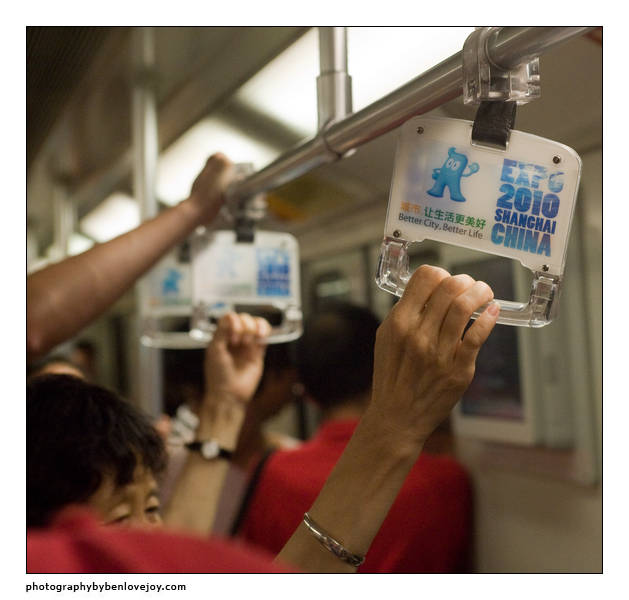
to head to Dochang Road, the main business district: |
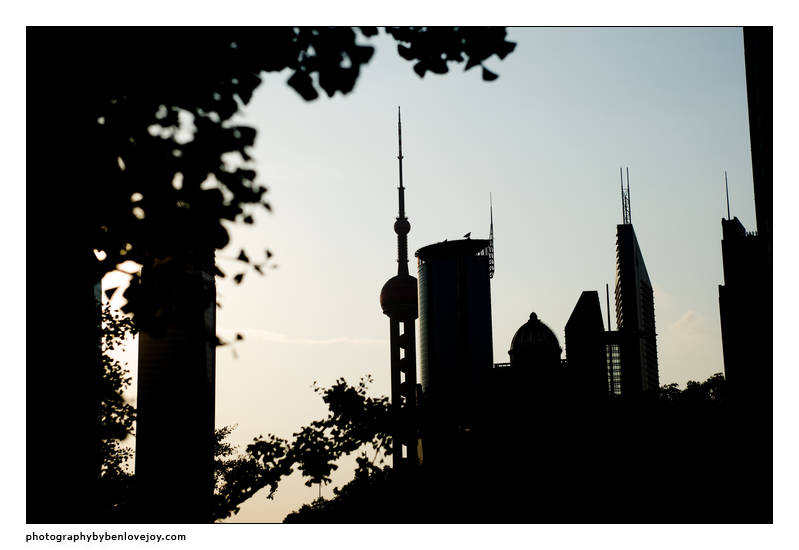
Specifically, I was headed to the tallest observatory in the world: the Shanghai World Financial Centre. |
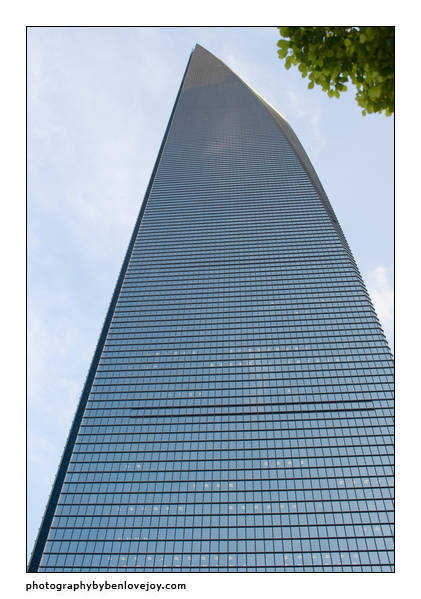
The observatory is on the 100th floor, 1614 feet up. :-) The first lift takes you from the basement to the 95th floor in just 56 seconds. While queuing for the next lift, to the 100th floor, I noticed a ladder on the outside of the glass. I like heights, but I'm not sure that I'd be able to climb that ladder! |
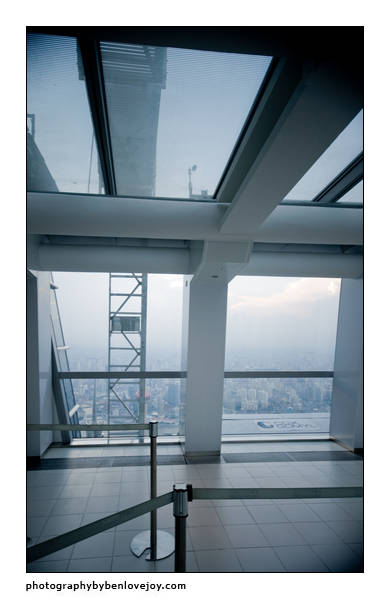
My strategy with observatories is to aim to be at the top about an hour before sunset. That gives me time to look around, enjoy the view, identify the best spot for photography and bag a space for my tripod. Sadly, sunset didn't materialise due to the smog, but night views are the next best thing, and there's something truly magical about watching a city gradually light up from on high. Within an hour, it was near-dark: |
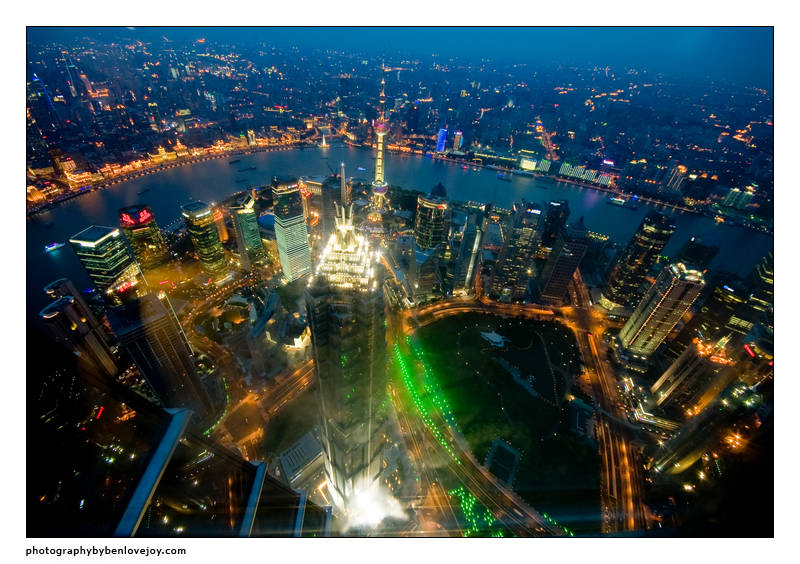
The tower in the foreground used to be the tallest building in Shanghai: the Jin Mao Tower. That's now dwarfed by the SWFC. Behind it is the TV Tower. |
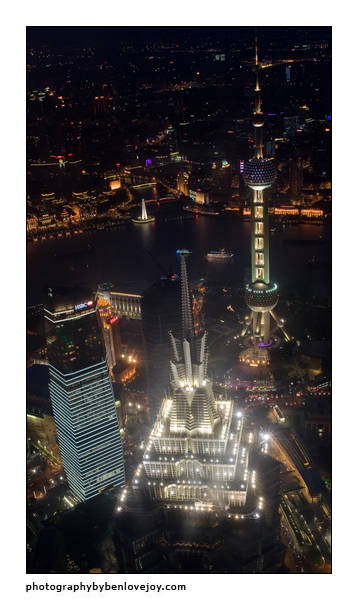
The TV Tower looks positively low-rise in such company, but is an impressive piece of architecture: |

Back down to street level, the SWFC tower looks even more impressive at night, the blurry clouds in the long exposure giving it a sort of eerie glow! (Jin Mao Tower on the right): |
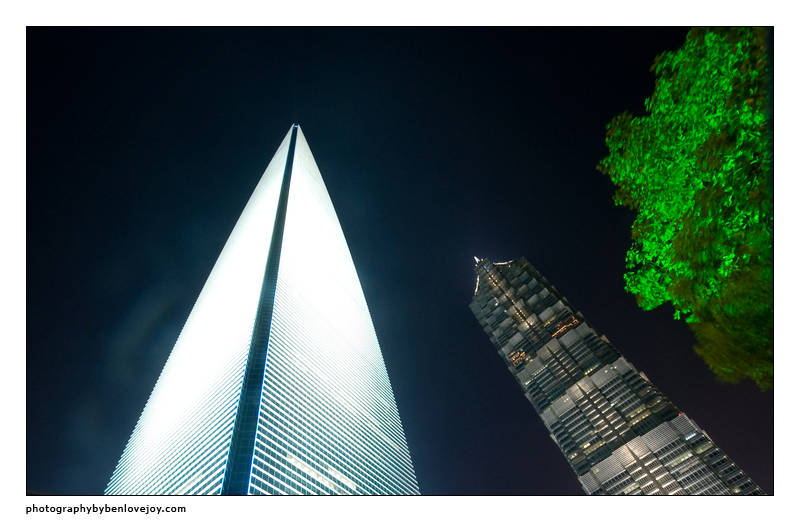
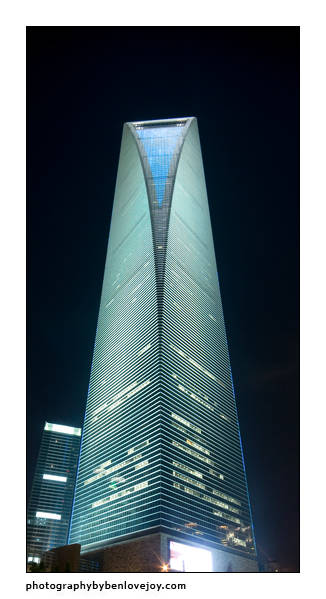
The top of the Jin Mao Tower may be a mere 87 floors up, but it houses a bar: Cloud 9 at the top of the Shanghai Hyatt. |
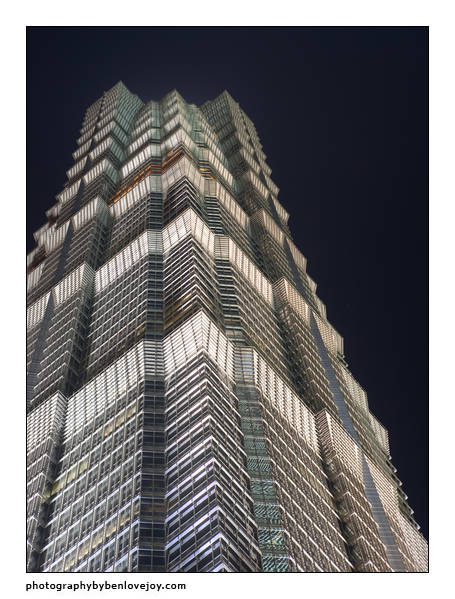
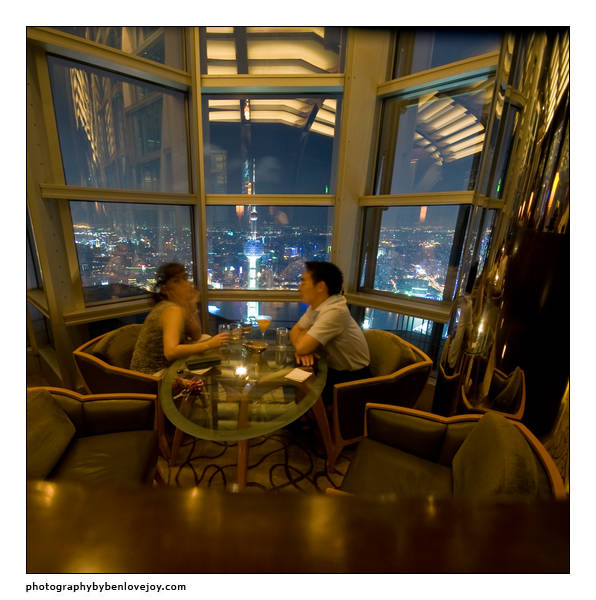
Where I consumed an £18 glass of Pinot Noir (which was fabulous): |
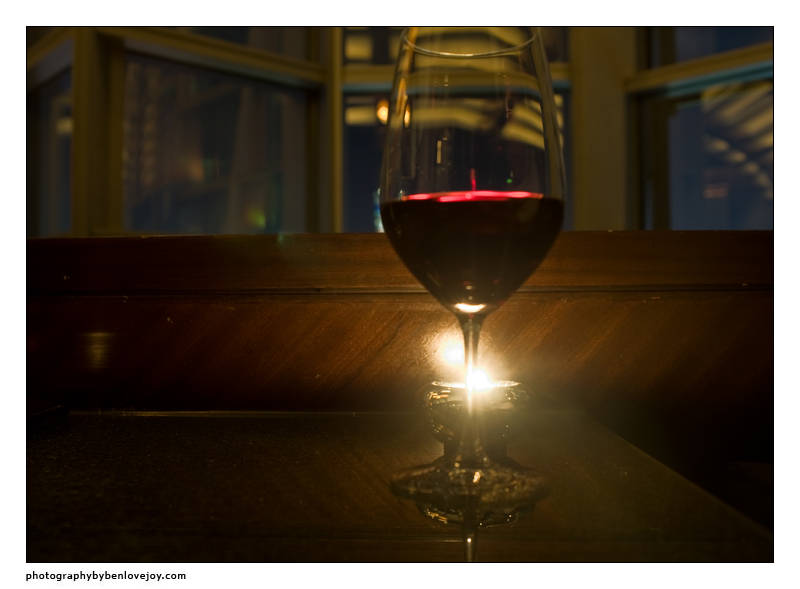
It was worth the £18 just for the view from the 85th floor down to the lobby on the 54th floor. This is quite possibly the most beautiful man-made sight I've ever seen: |
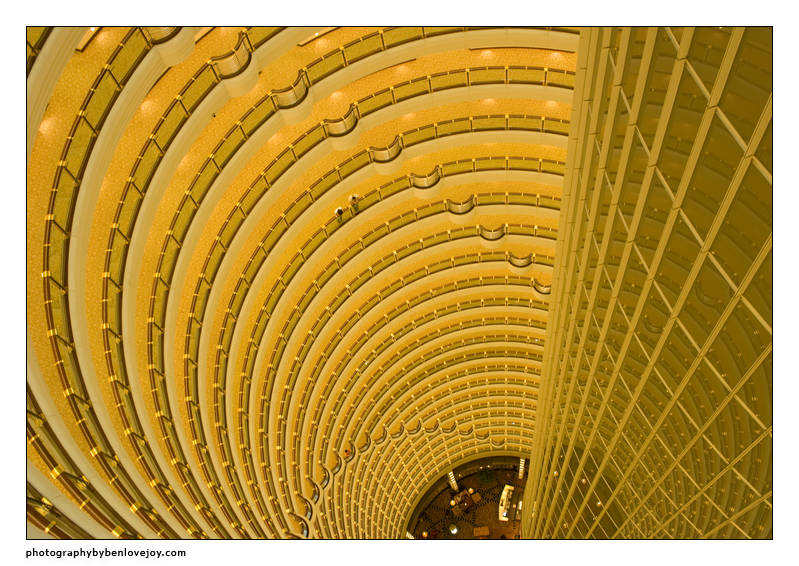
Then back down to ground level for a look at the rest of the skyscrapers. |
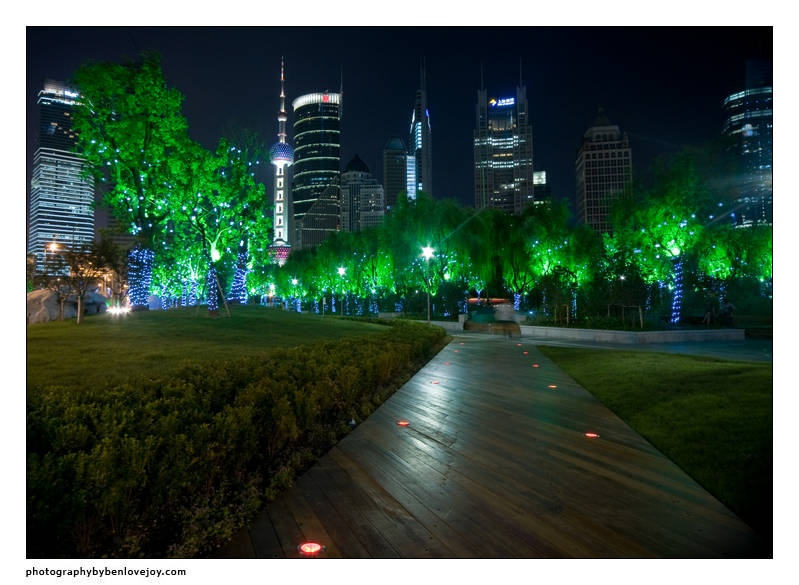
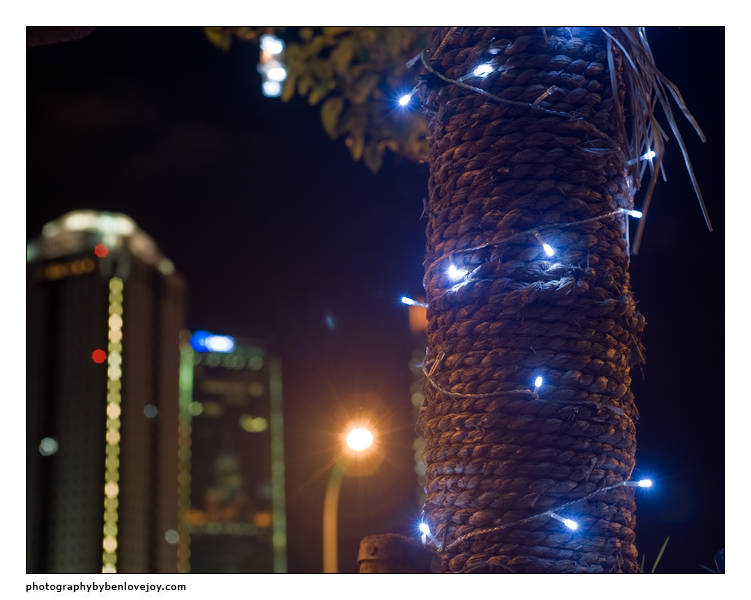
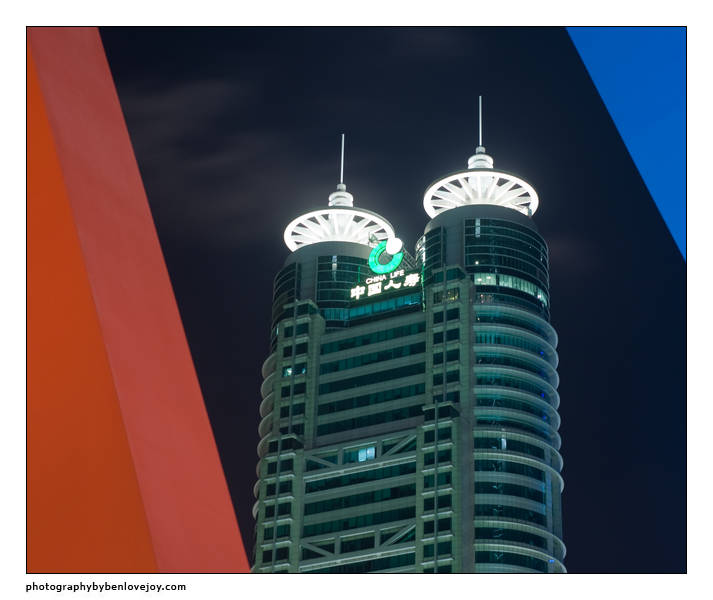
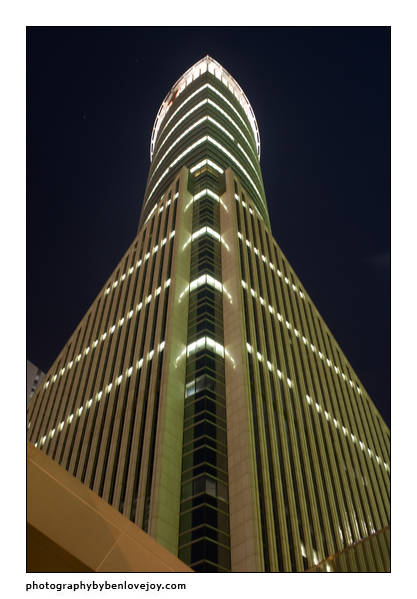
Though it must be admitted I kept being drawn back to the TV Tower: |
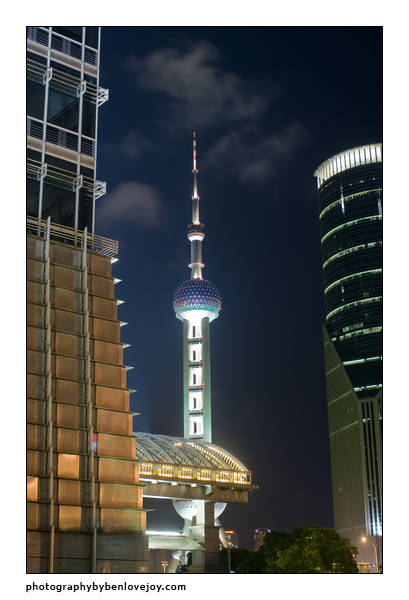
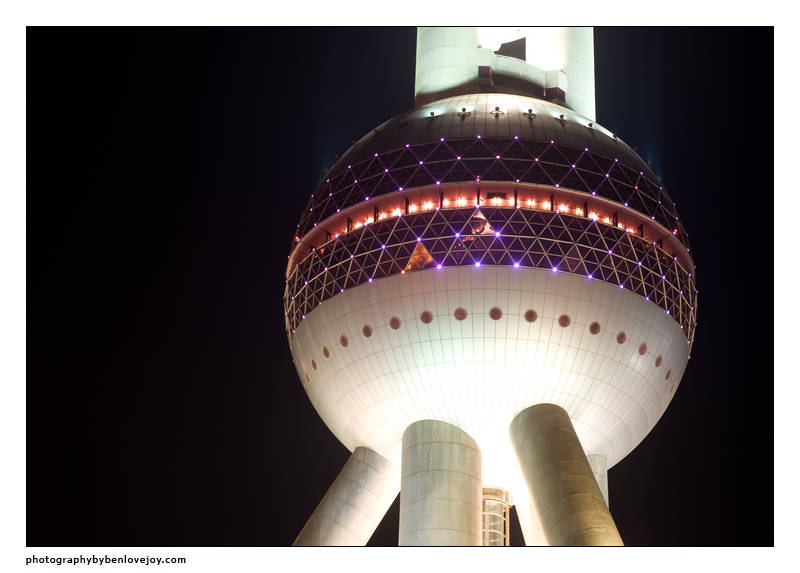
The area is also a suitably upmarket shopping area. The big designer stores don't do subtlety here ... |
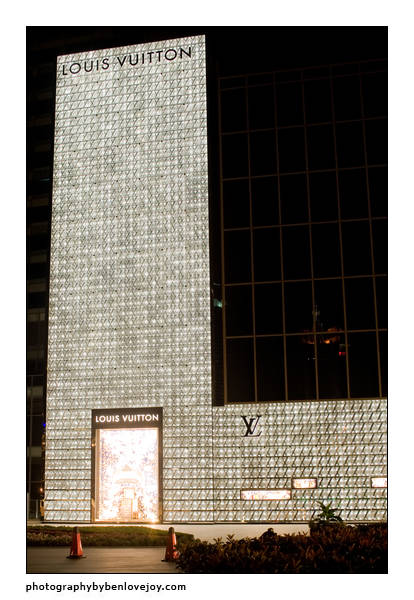
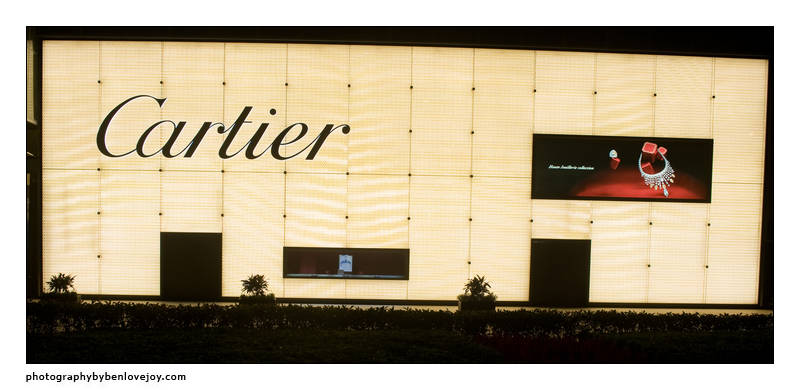
Spotting a workman's cart a couple of hundred feet away, I couldn't resist asking (well, miming) him if we could position it in front of the Cartier store. He was bemused but willing: |
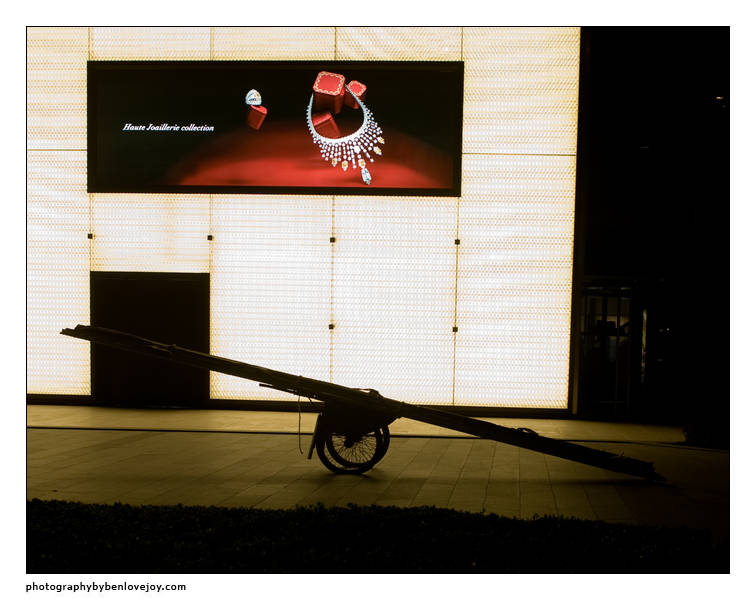
A security guard came rushing over, and I just grabbed the shot before a message that was clearly comprehensible without any Chinese vocabulary ... I was feeling too tired to do the Metro (two lines followed by a half-mile walk), so hopped in a taxi. The journey was about 20 minutes and cost four quid. |
ThursdayDespite being tired, I couldn't sleep: an occupational hazard of very short trips to far-flung time-zones. The upside of this was that I was able to make it to the People's Park for Tai Chi at 5am! The first challenge was that the Metros don't run that early, and the front-desk is also unmanned at that time. Taxi drivers don't generally speak or read English, so you need your destination written in Kanji. Usually the receptionists did this for me, but today I had to improvise. I visited Google Translate, photographed the result, zoomed in to the Kanji phrase and showed it to the taxi driver on the LCD screen on the back of the camera. This worked. :-) |
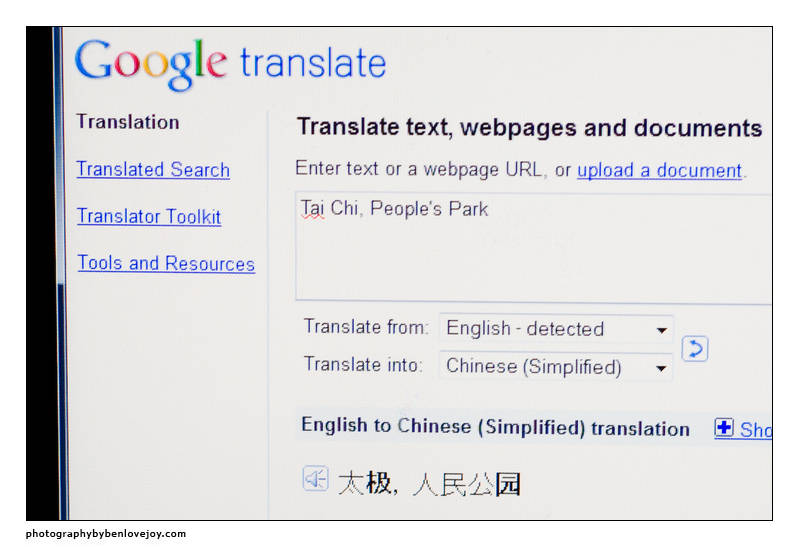
(I could, of course, have done the search on my phone, but wireless in my hotel was free and data charges on the phone decidedly weren't.) I thus had the rather unusual experience of seeing the effect of sun-rise on buildings ... |
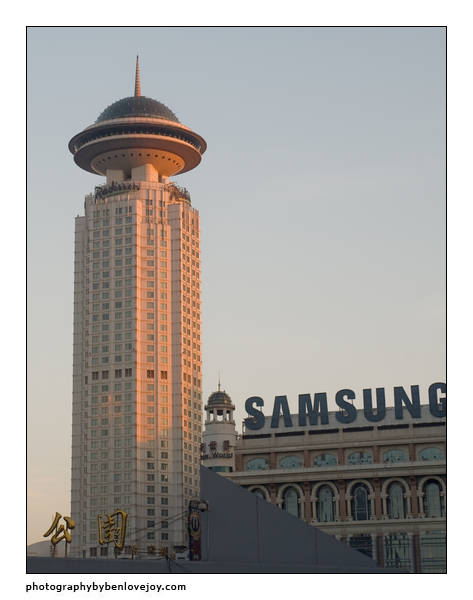
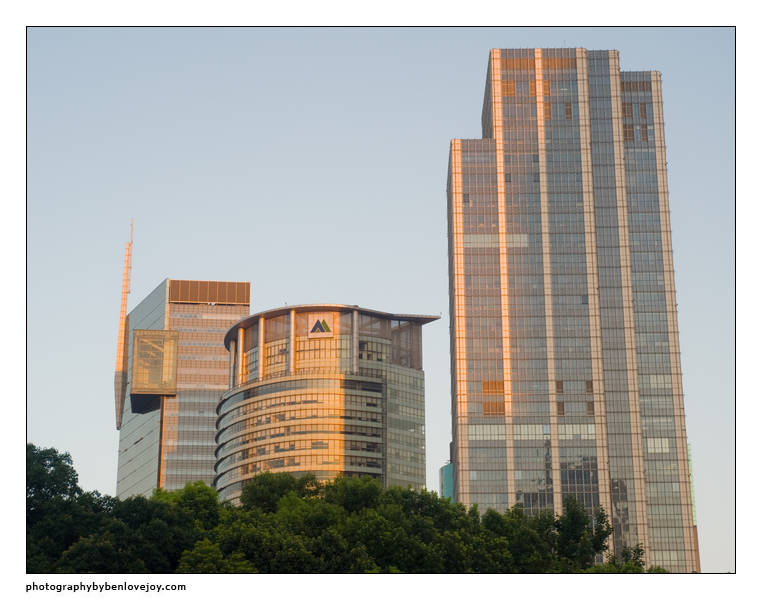
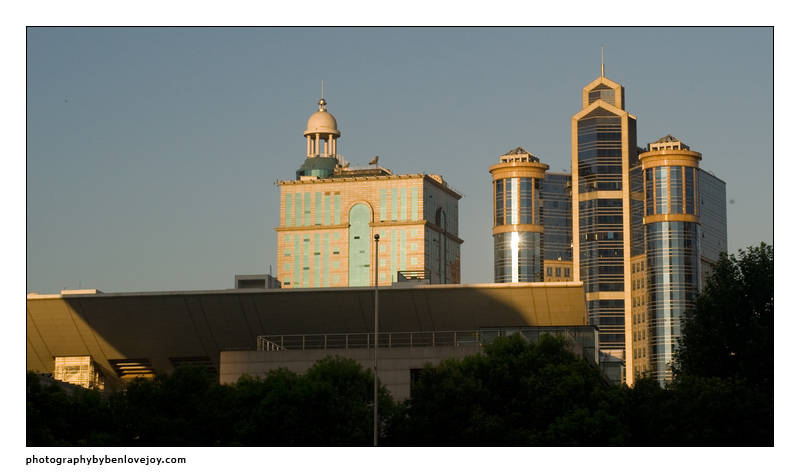
I got there shortly before 5am, as I'd read on the web that the Tai Chi tended to happen between five and six. I enquired of locals in the park (of which there were no shortage at 5am!) and was told it was more like 5.30am, so I wandered around for a while. It's a beautiful place. |
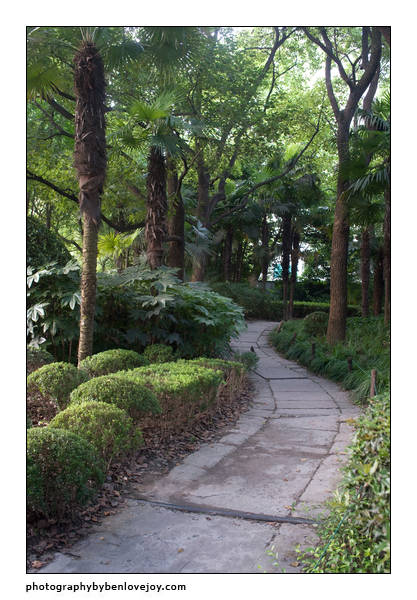
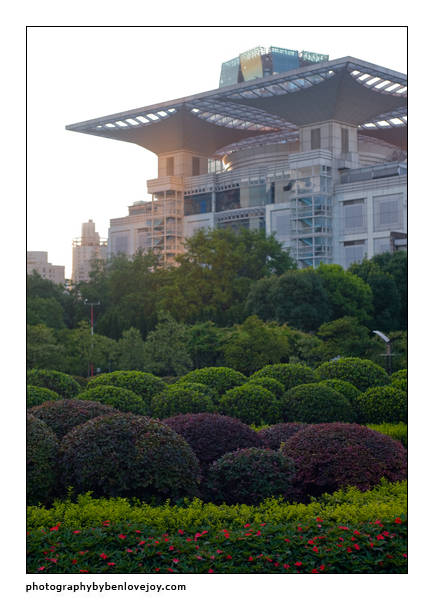
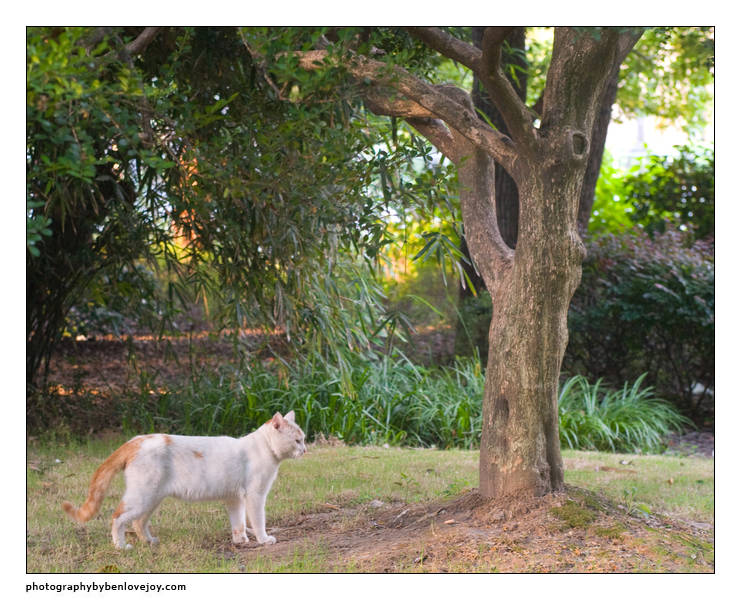
The locals seemed to be enjoying themselves. I asked permission to photograph people in my standard universal manner: saying hello (one of my vanishingly few Chinese words), smiling, and holding up my camera with a questioning look. Almost everyone said yes. |
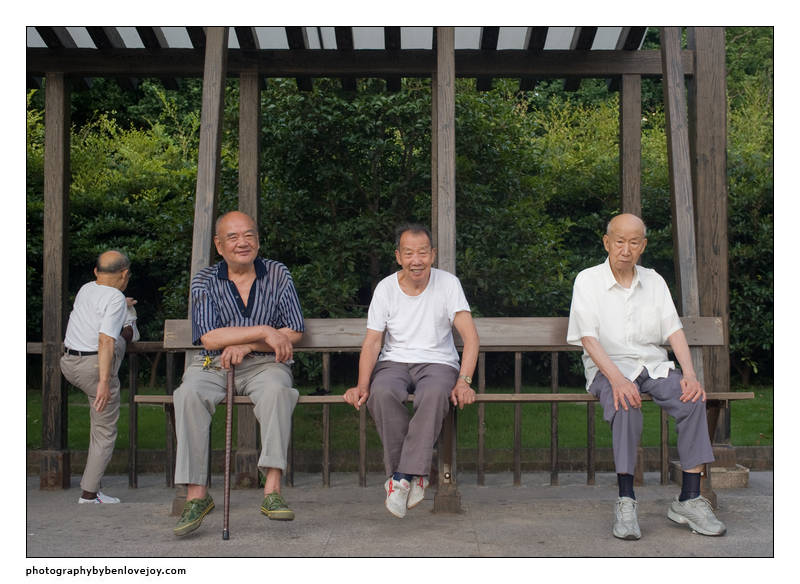
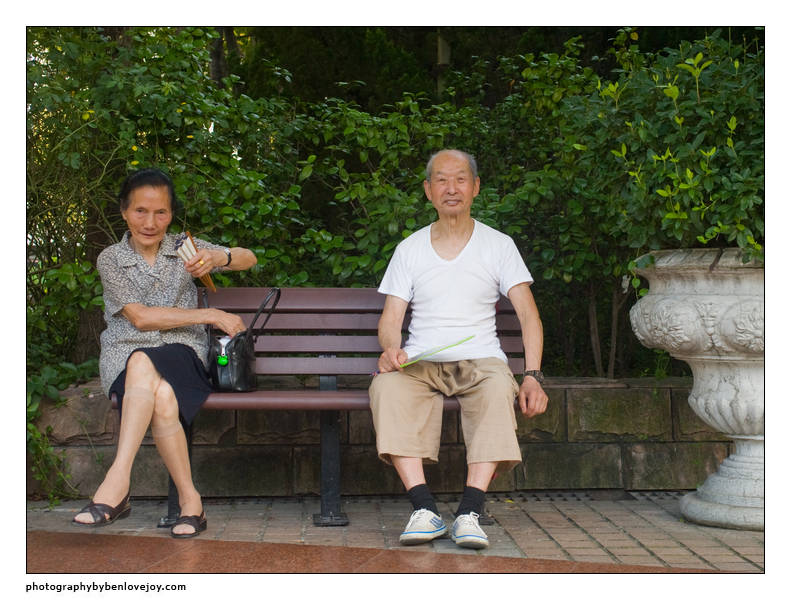
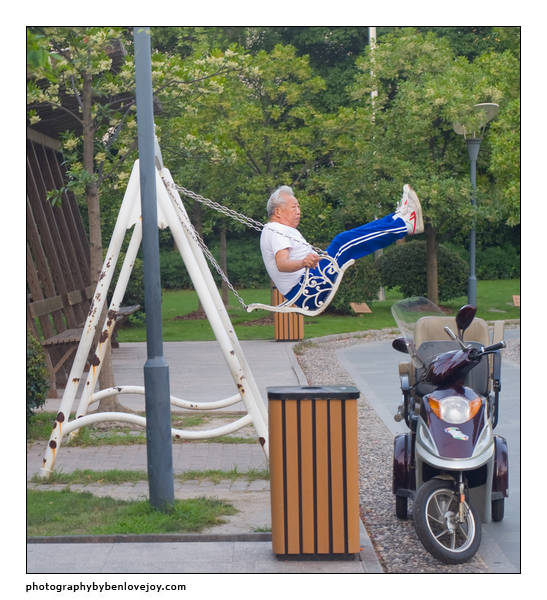
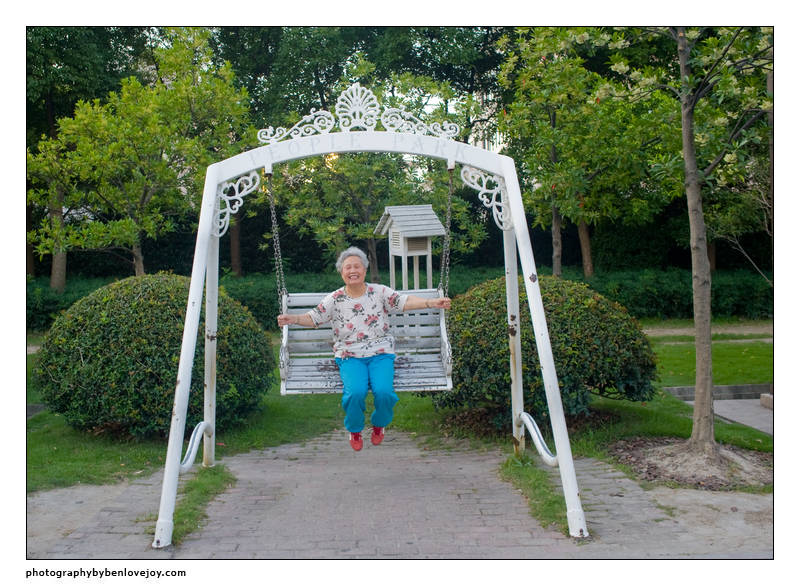
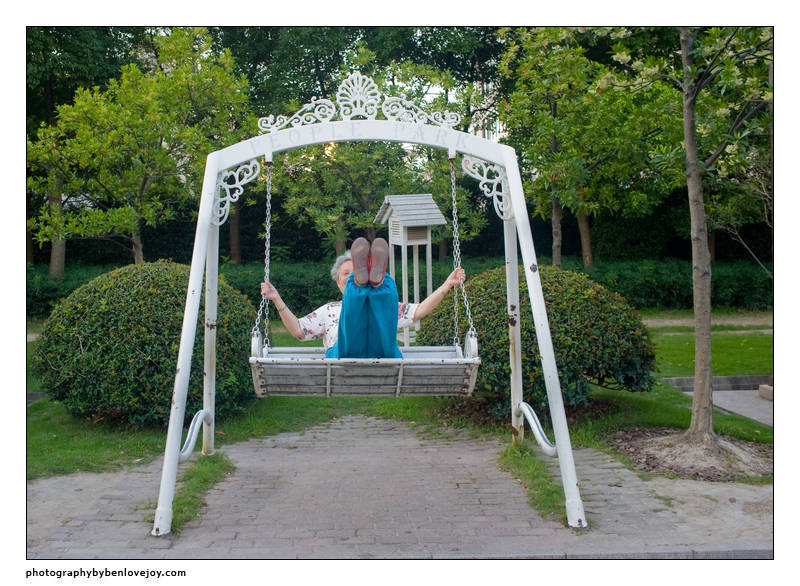
There was still no sign of any Tai Chi, so I was even driven to photographing flowers and birds! Ok, one flower and one bird, but still ... ! |
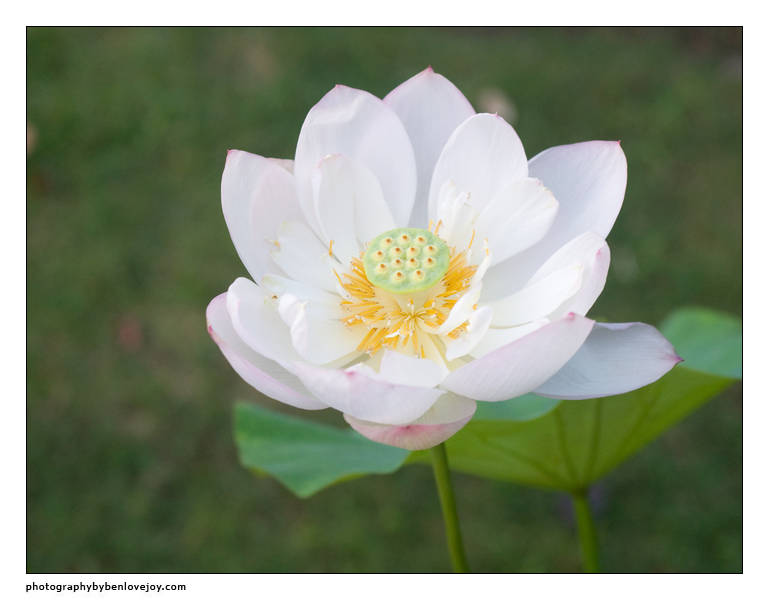
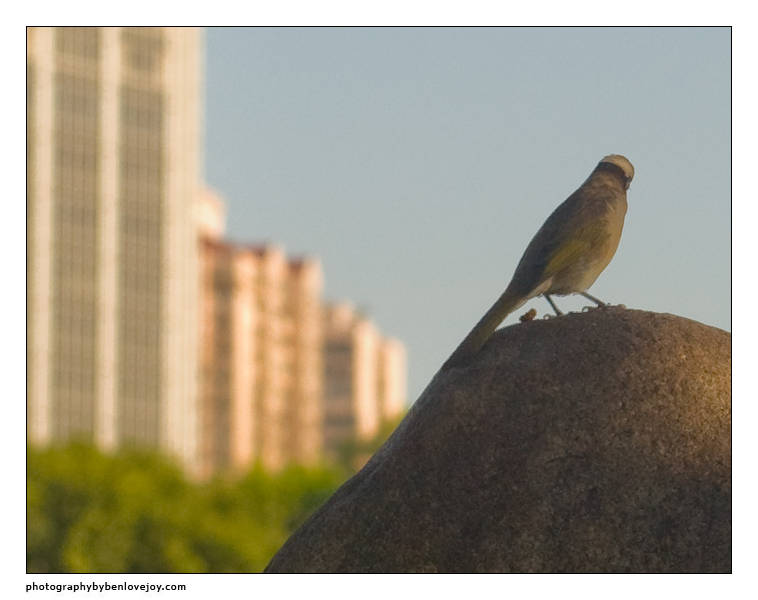
From the webpage, I'd expected to see massed Tai Chi-ers; instead, one by one, and scattered around the park, people started their exercises. The numbers gradually increased, and by 6-ish there were some group sessions too.. |
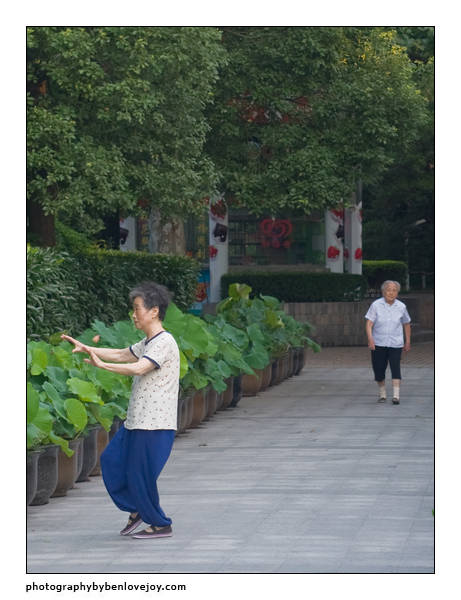

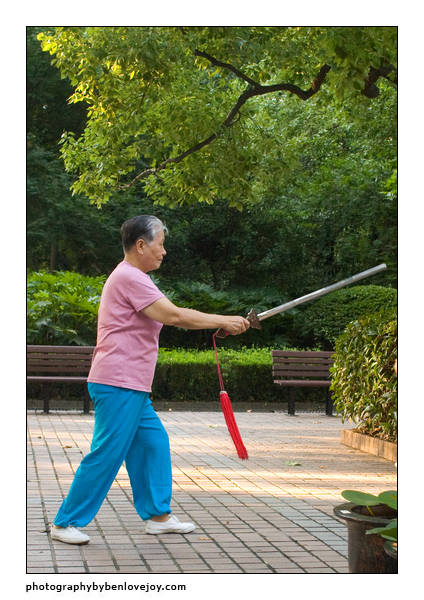
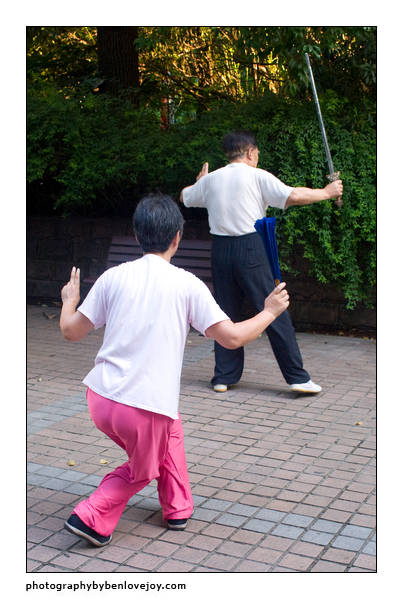
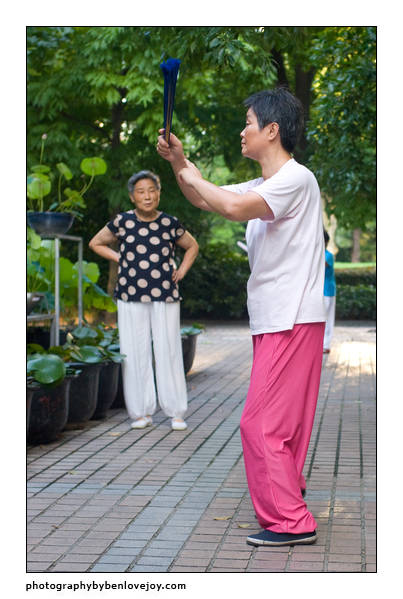
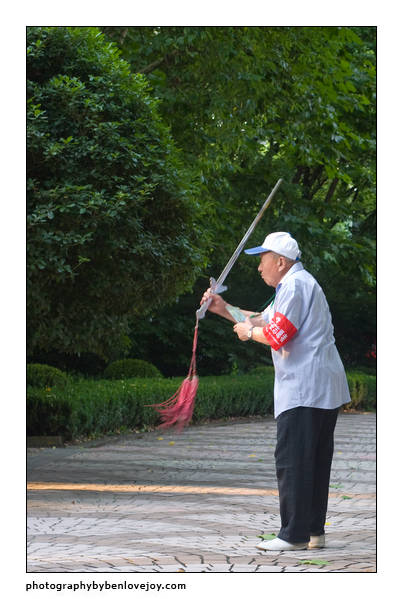
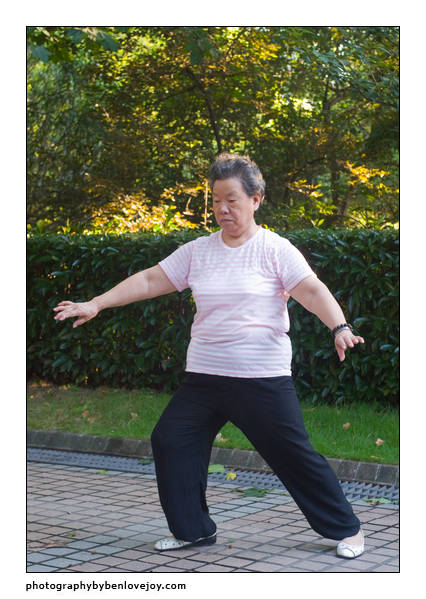
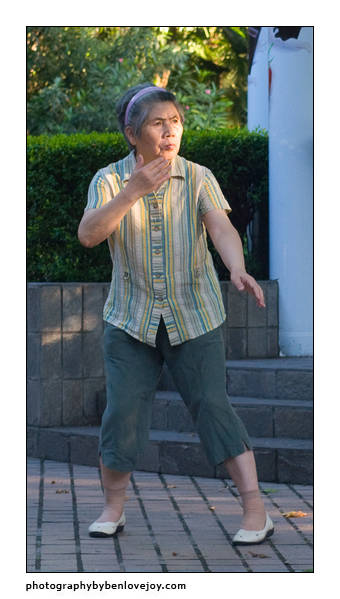
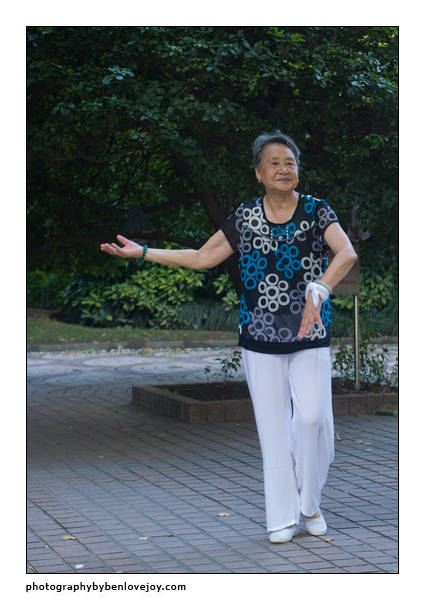
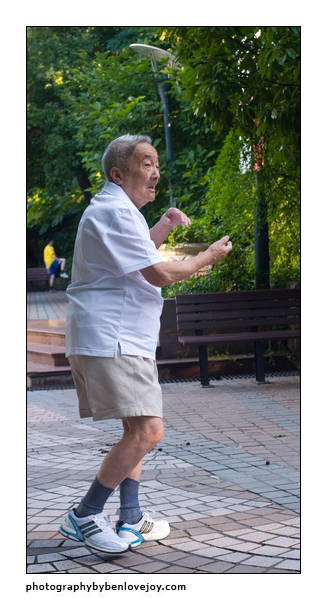
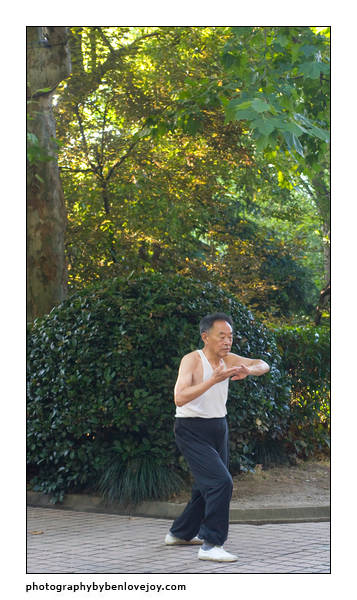
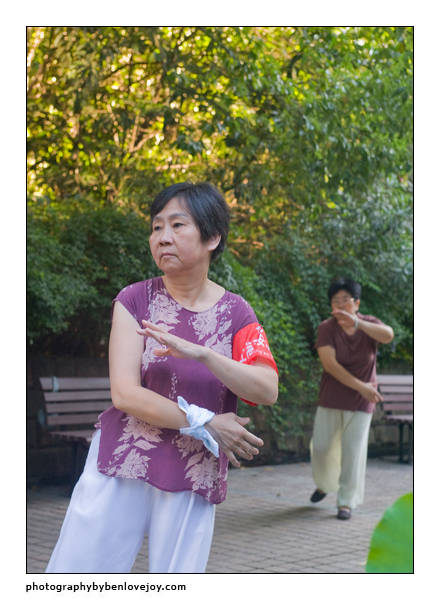
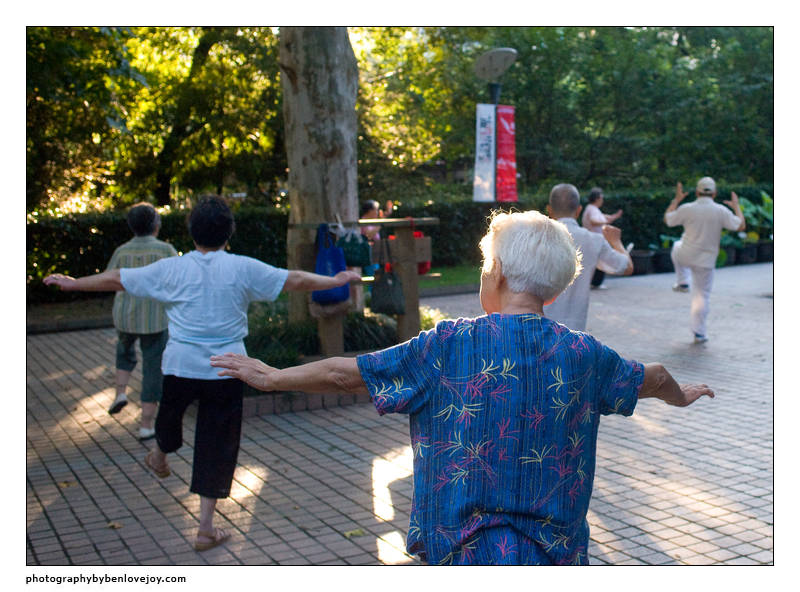
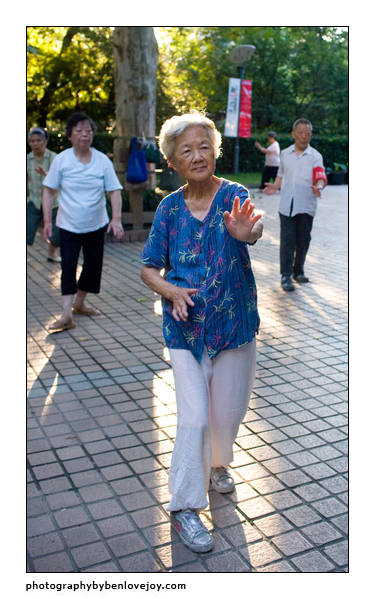
It wasn't quite as photogenic as I'd hoped, with cluttered backgrounds and people walking past and even through the groups, but it was a lovely, peaceful experience, so for much of the time I just stood and watched. I then wandered round the People's Square enjoying the amazing architecture surrounding it. If ever I find myself in need of an architect to build a new skyscraper (it could happen, right?), I shall head straight back to Shanghai to find one. |
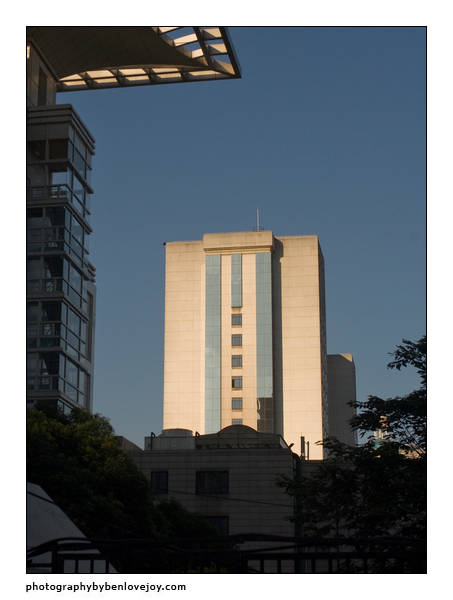
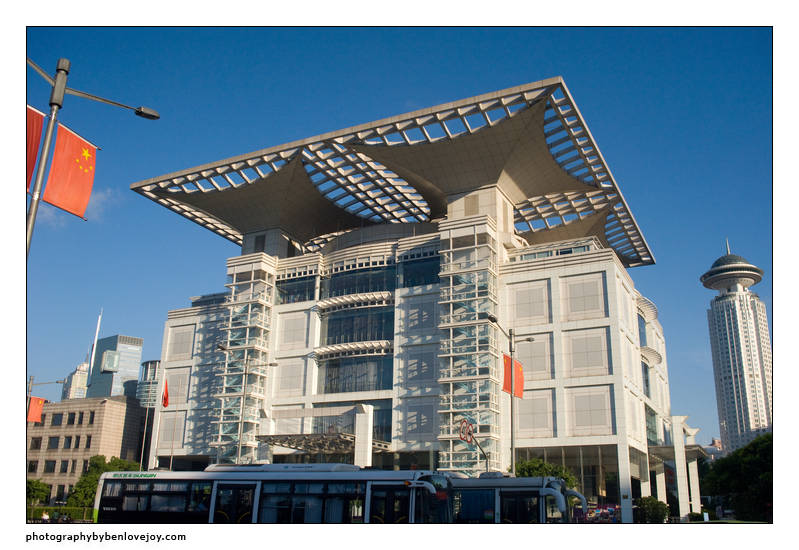
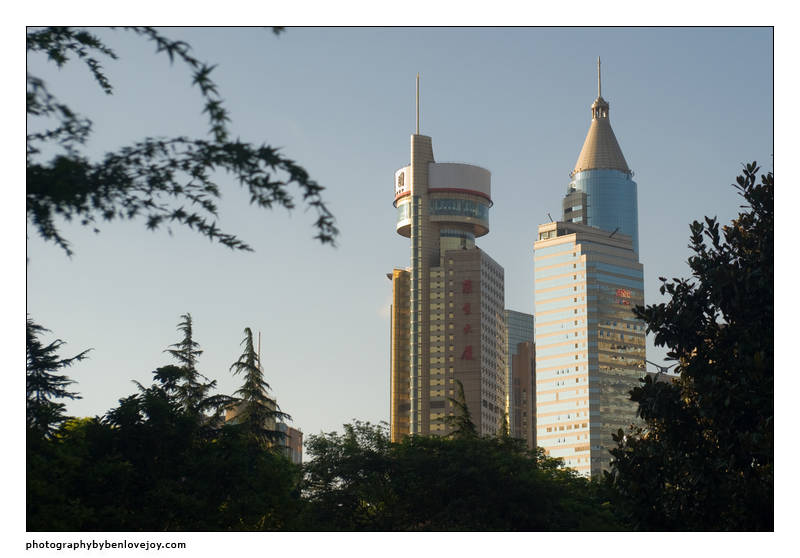
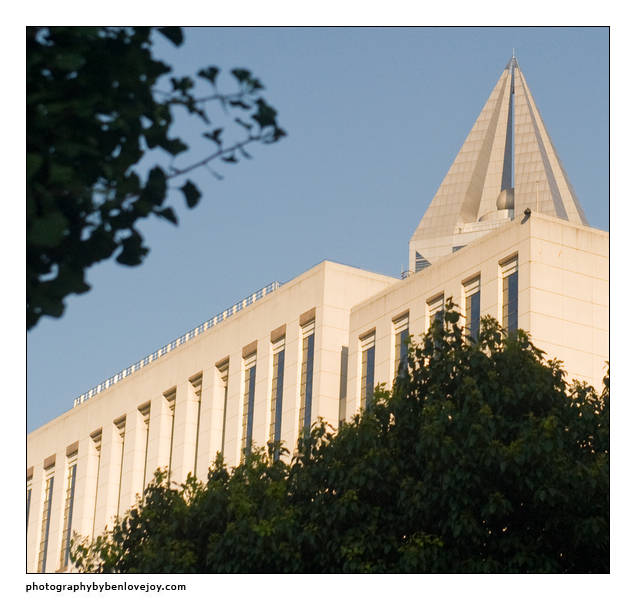
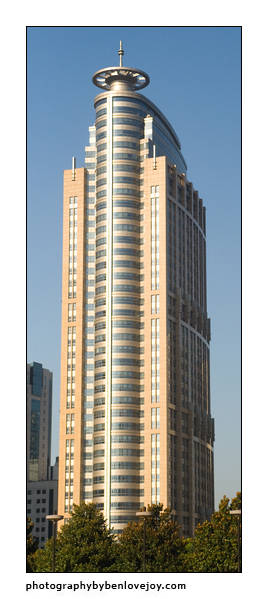
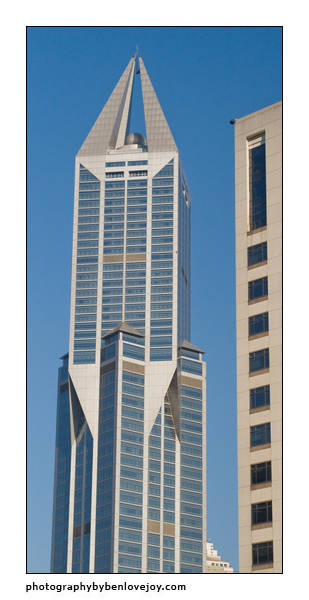
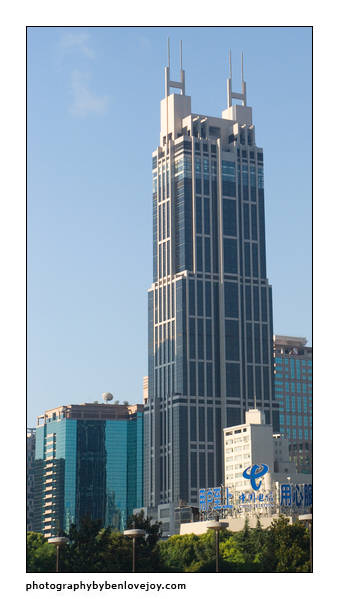
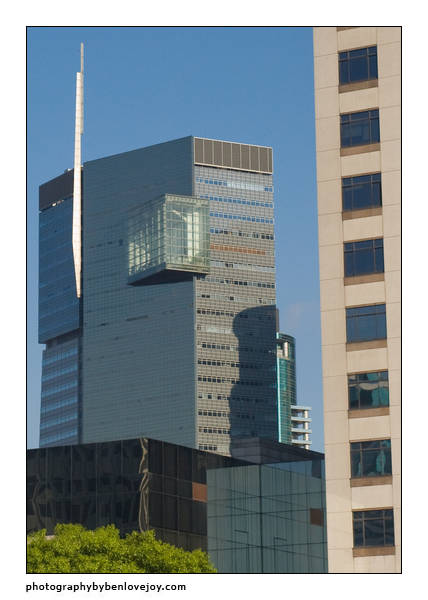
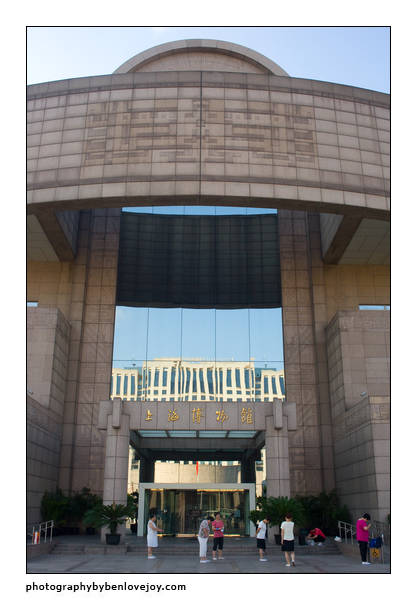
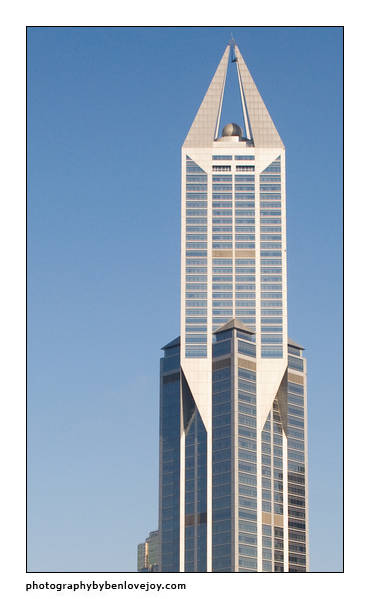
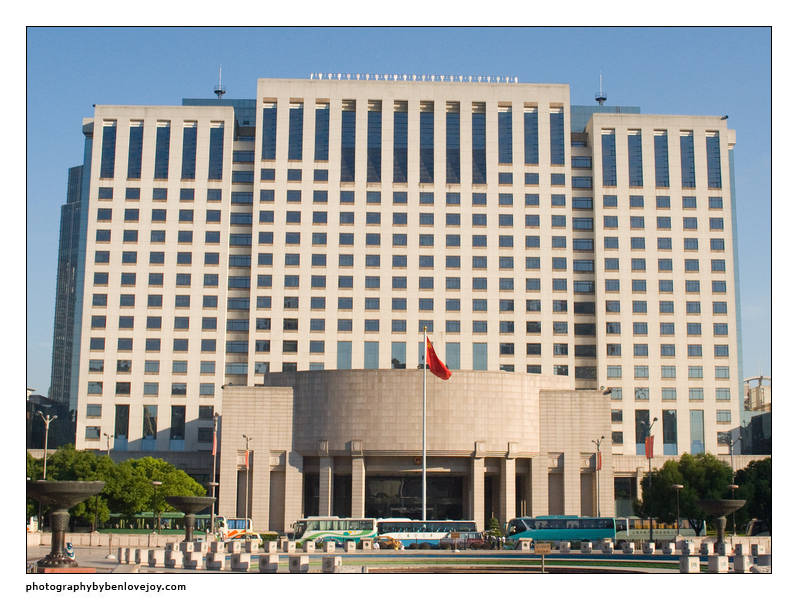
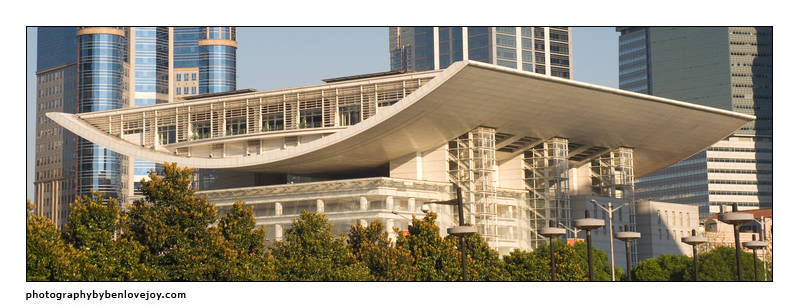
Back to the hotel for breakfast. At 6.30am, it was already baking hot, and I couldn't face the Metro in the rush-hour, so grabbed a taxi for what should have been a 10-minute ride. The taxi driver didn't seem very sure of where he was going. He kept looking again at the hotel address (in Kanji) and then his map. After several U-turns and seeing the same junction twice, I tried to show him on my English map where the hotel was. He couldn't make sense of it, so I tried to find it on his Kanji map. Hmm, I see the difficulty. I tried to spot it by the pattern of the river, but both maps were schematic in nature and each used a different representation of the shape of the river. Eventually, with the fare double what it had been on the way there, he was sufficiently embarrassed to stop the meter. Finally, I recognised a road and was able to direct him the rest of the way there. The hotel offered a choice of English and Chinese breakfasts. The Chinese one had a crazy number of dishes, very few of which looked familiar or, indeed, recognisable. I asked one of the staff to suggest a selection. I hope that she understood the implied "which doesn't contain monkey bollocks" ... After a shower and shave, I head back to the People's Square to supplement my actual experience of Shanghai's architecture with the virtual version. The Urban Planning Exhibition Hall has a scale model of the city, so this time no fake tilt-and-shift needed! After paying your £3 to get in, the first thing that catches your eye is a huge gold-coloured rendition of some of Shanghai's most iconic buildings: |
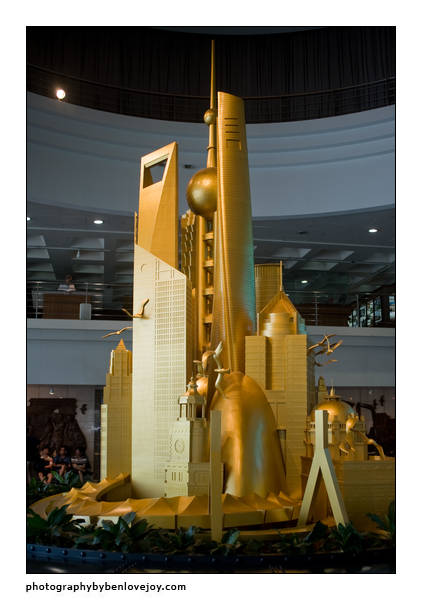
In front of that is the scale model of the city: |
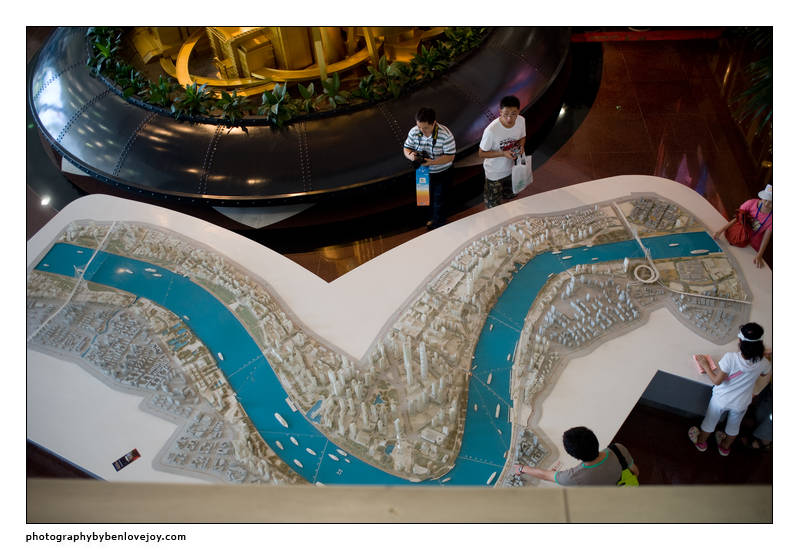
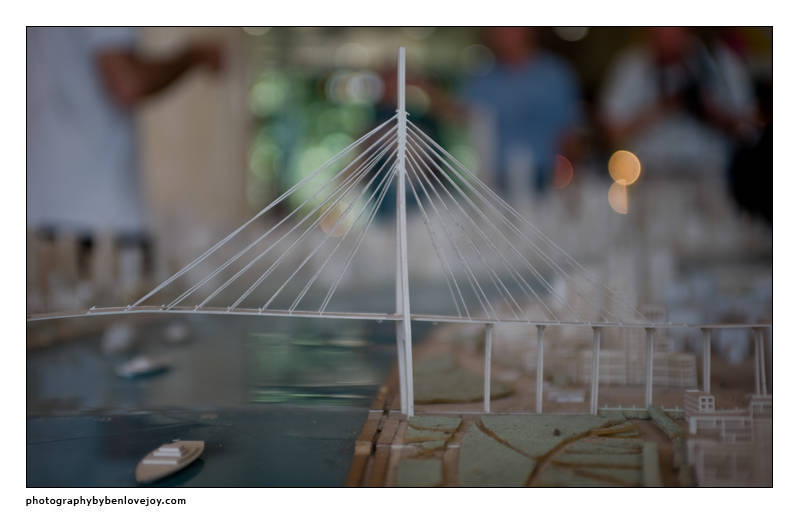
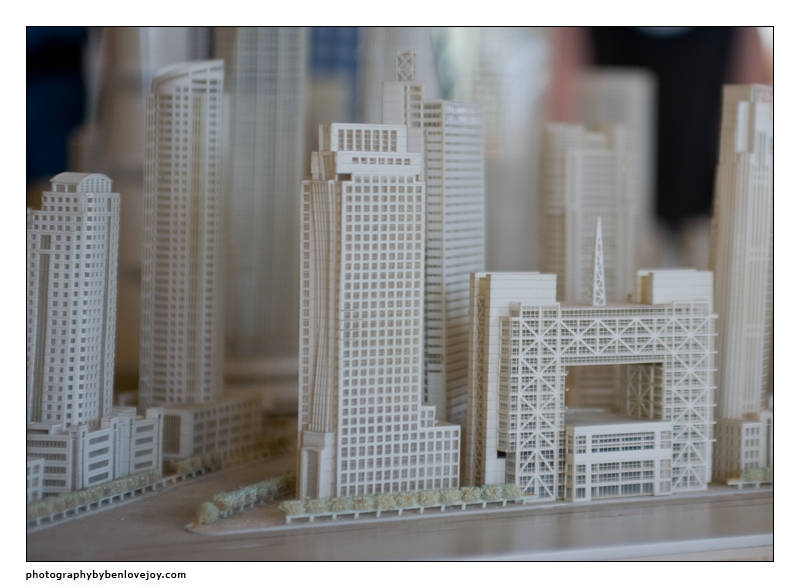
I still can't resist photographing the TV Tower, even in miniature! |
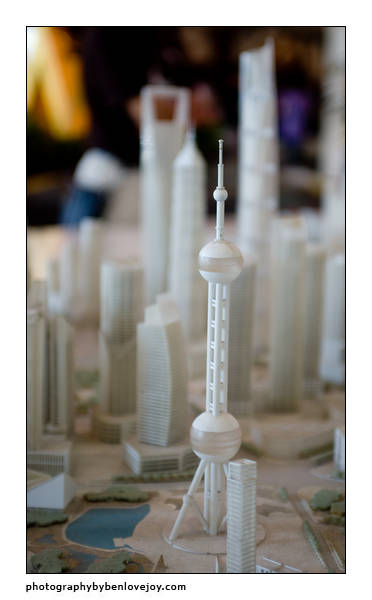
The model shows not just what is there today, but also planned new buildings. The SWFC may have overtaken the Jin Mao Tower as Shanghai's tallest building, but it seems it won't be holding the record for long! |
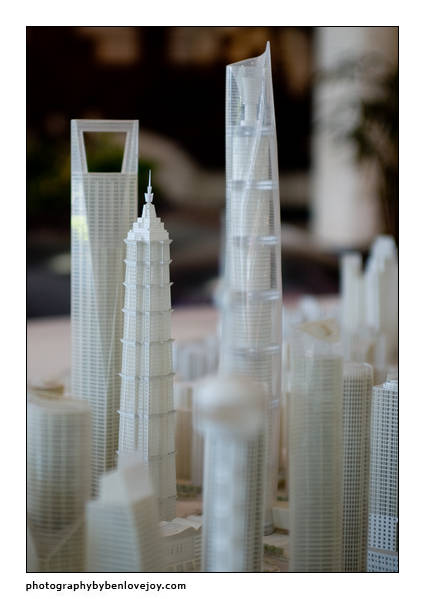
But the exhibition centre has a surprise in store: this isn't the real scale model at all, this is just some small-scale secondary display! The real model, two floors up, is absolutely enormous, both in the area of the city it covers and the scale: |
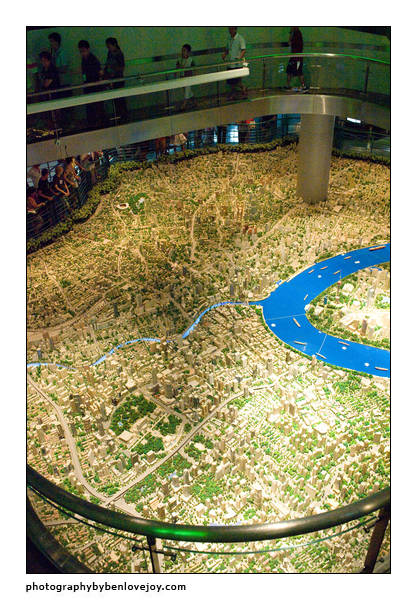 \
\
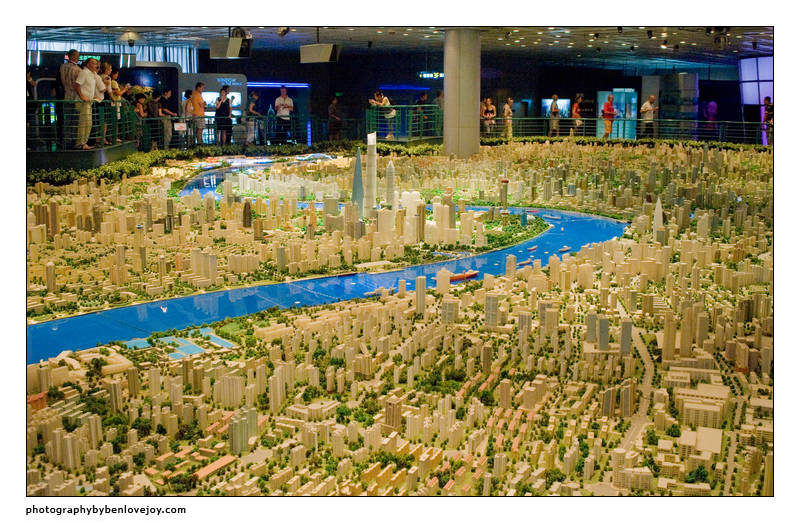
It's an incredible piece of work. Tour guides can dim the main lighting and light up individual areas of the model to show which buildings they are discussing. This didn't help me too much as the two tours I heard during my visit were in Chinese and German respectively, so I just watched the pretty lights. |
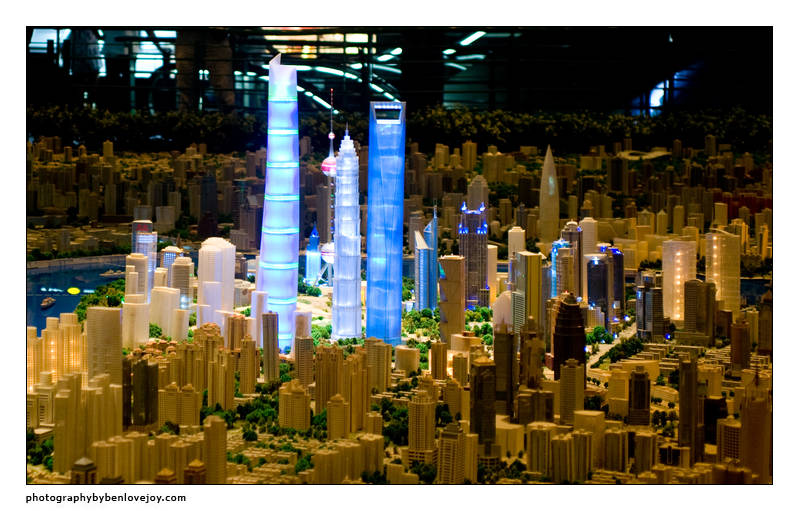
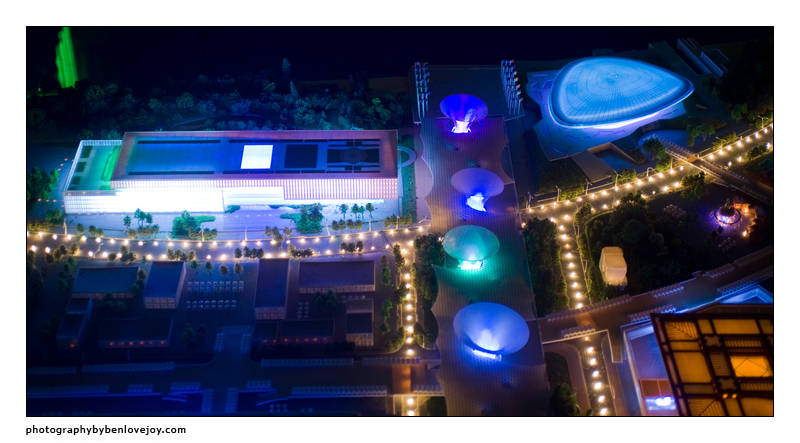
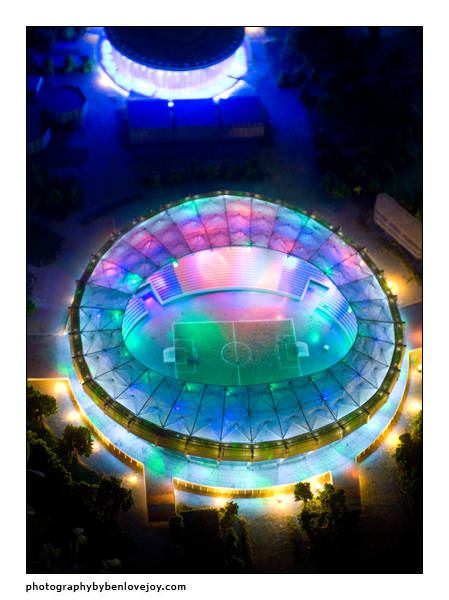
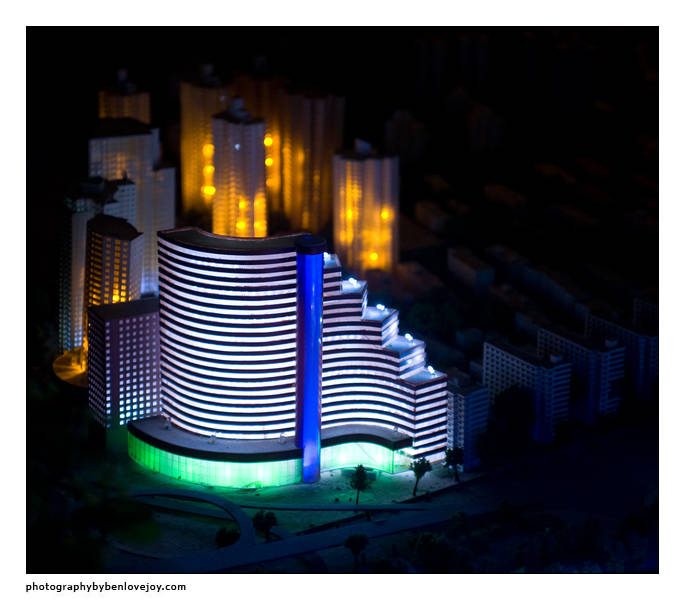
The final element of the exhibition was devoted to the work of the architect John Portman. Coincidentally, I'd photographed one of his buildings earlier in the morning: |
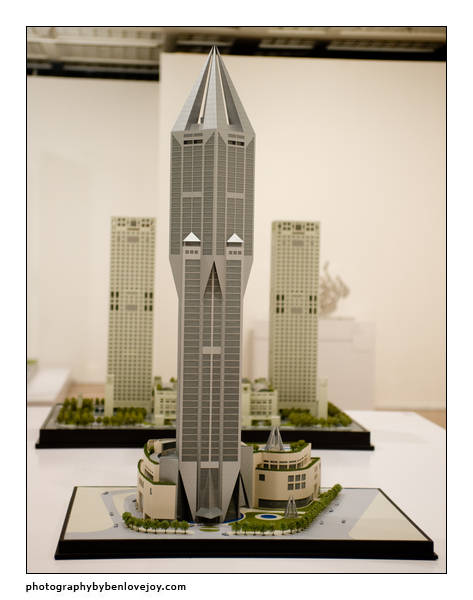
I'm guessing this one is planned rather than already in existence? |
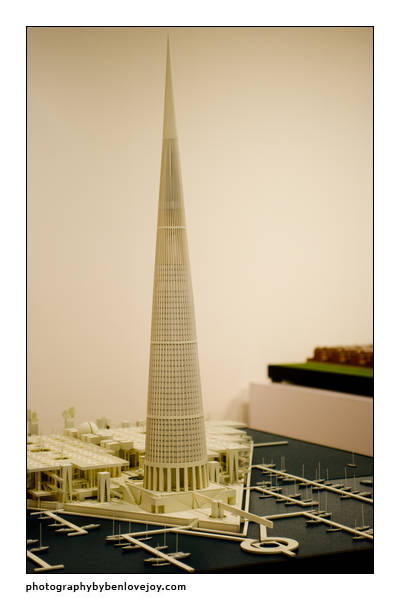
And this one is due for completion in South Korea in 2014. I think I'm going to have to finally organise that visit ... |
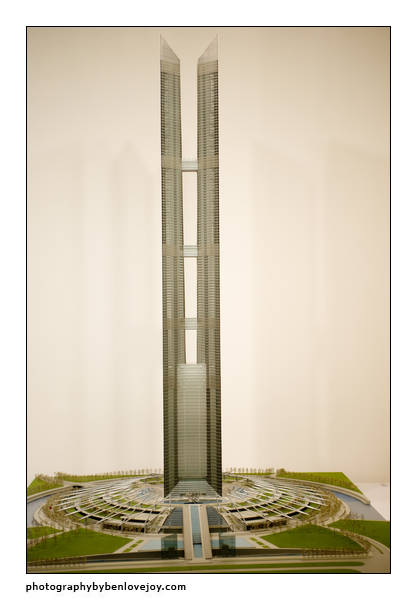
As an indication of scale, each of the connecting walkways is four stories high. I also don't know whether this home is real or merely a concept, but I could definitely slum it there if I had to: |
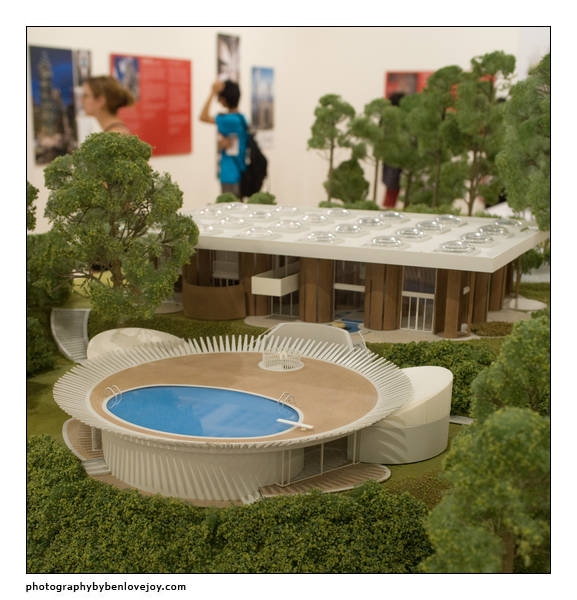
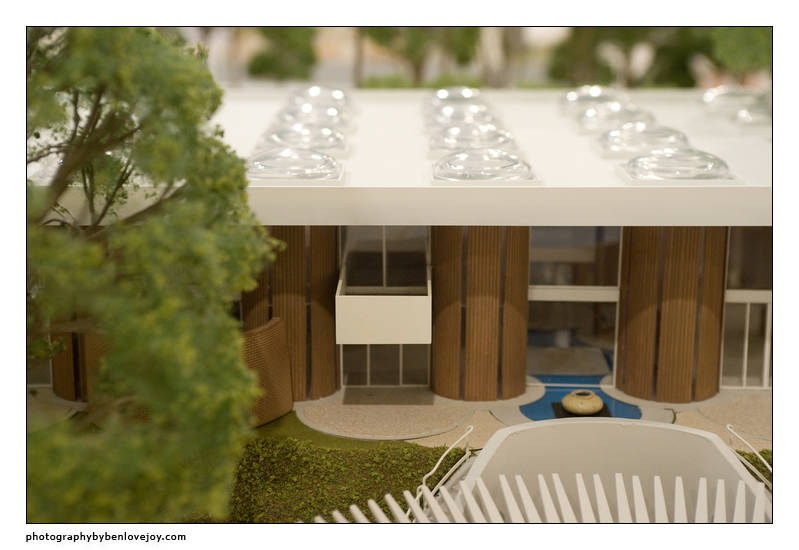
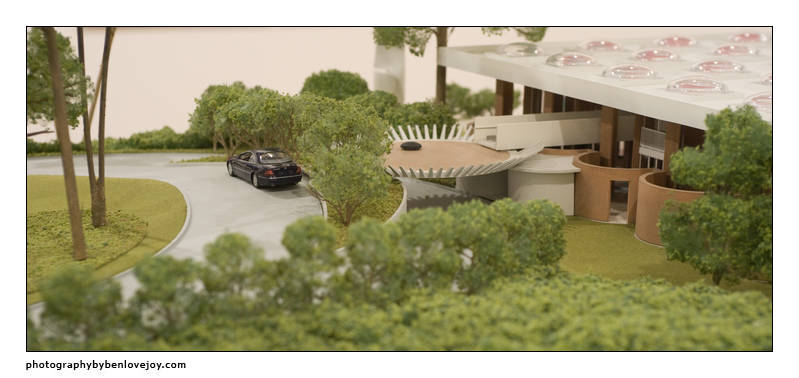
Finally, the exhibition displayed some of his furniture and sculpture, including this dining set: |
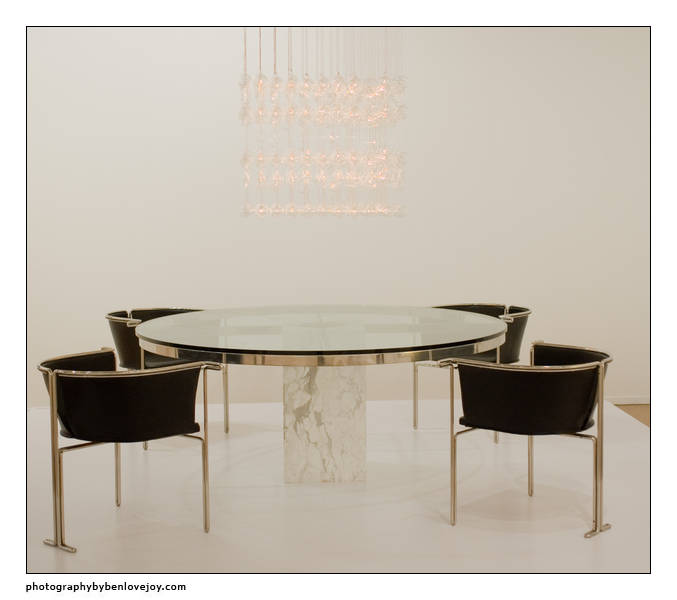
And this rather splendid silver mask: |
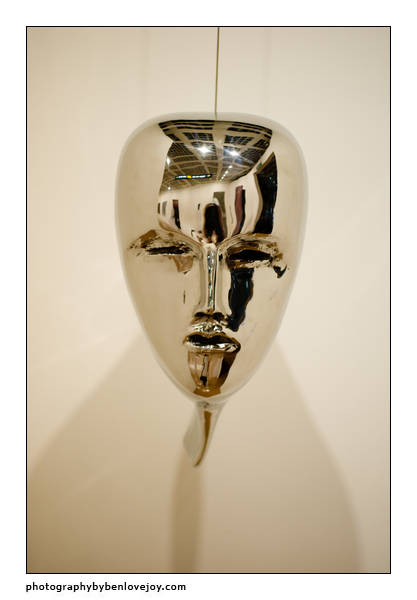
I headed down to the Expo, fearing I might be questioned by airport police if I left Shanghai without checking it out, but the queues were absurd, estimated at 2-3 hours. I'm not noted for my patience at queueing at the best of times, but in mid-30s heat, I was definitely giving that a miss! |
FridayMy final day, where the two main items on the agenda were a visit to the old town, followed by watching the sun go down over the Bund. The old town is in Qibao, about 10 miles from the city centre. The place is a curious mixture. Part fairly down-at-heel housing: |
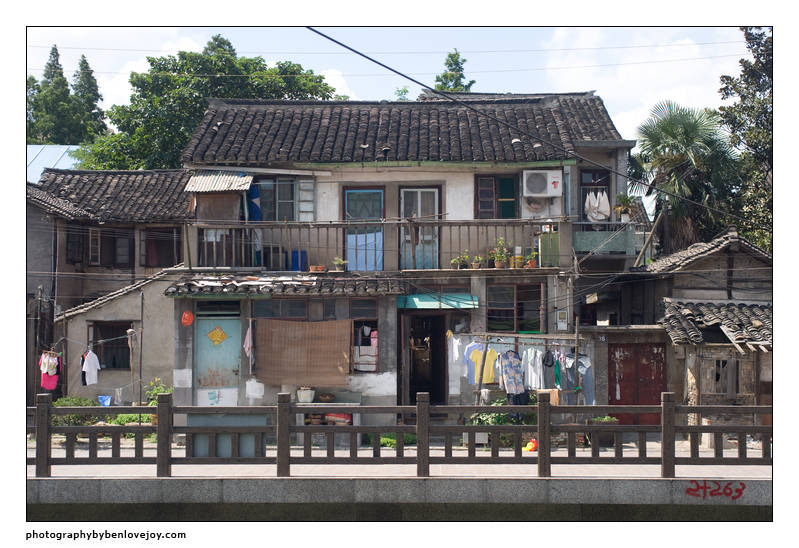
And part picture-postcard scene: |
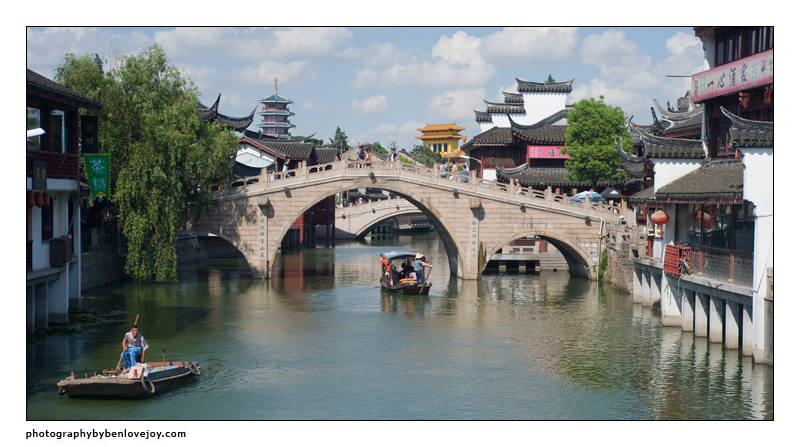
Though the boating did look hot work - both were paddling by hand. The guy on the left was fishing litter out of the river. |
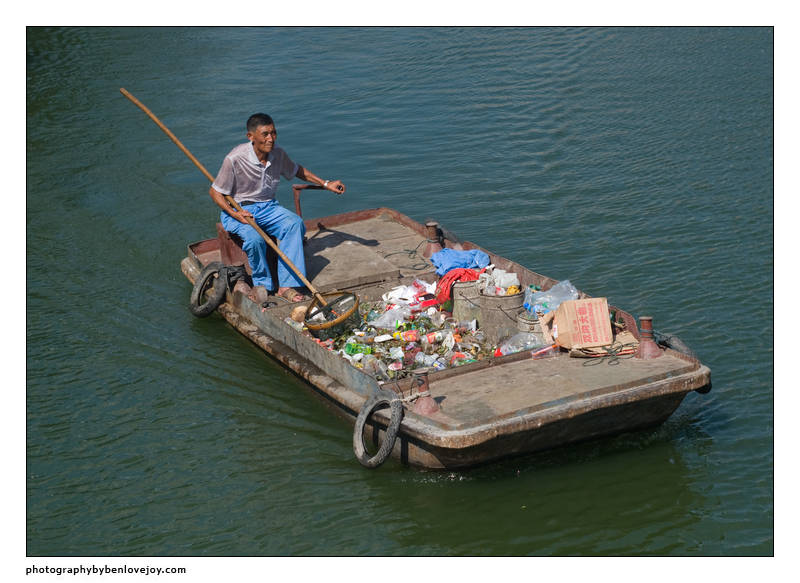
The central area is a large market which is equally schizophrenic in nature. There are shops selling tourist tat, most of it seemingly aimed at Chinese visitors from the provinces, rather than foreigners. This seems wise, as it was rare to see a non-Chinese face there. |
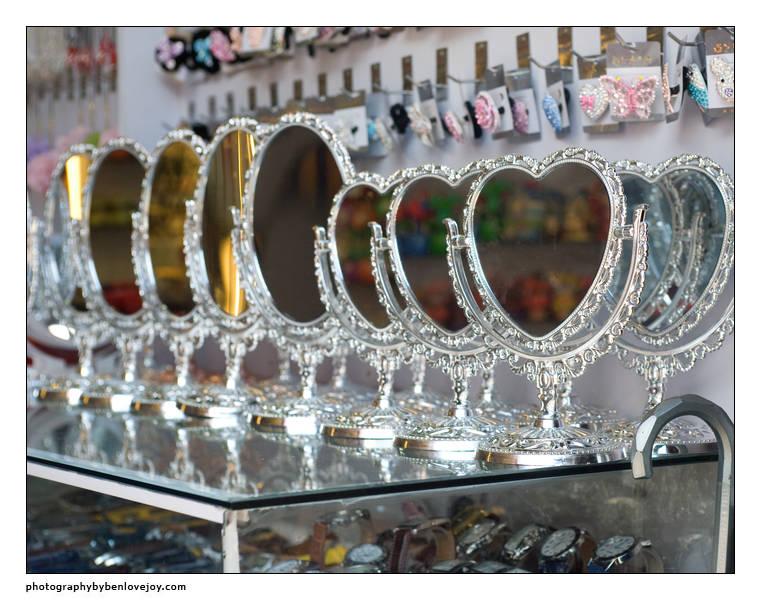
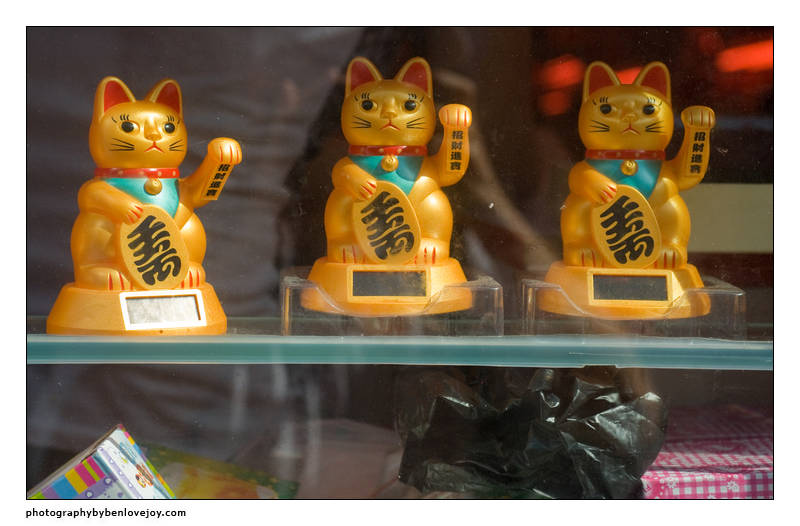
You then had some rather upmarket shops: |
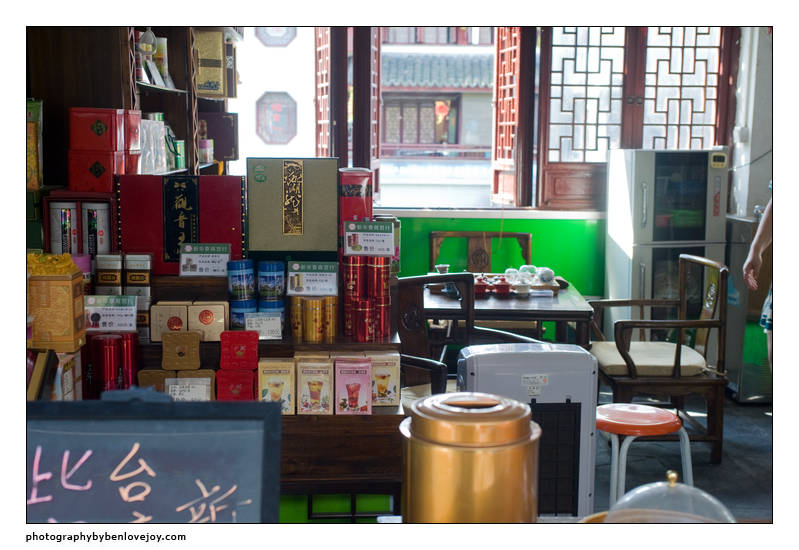
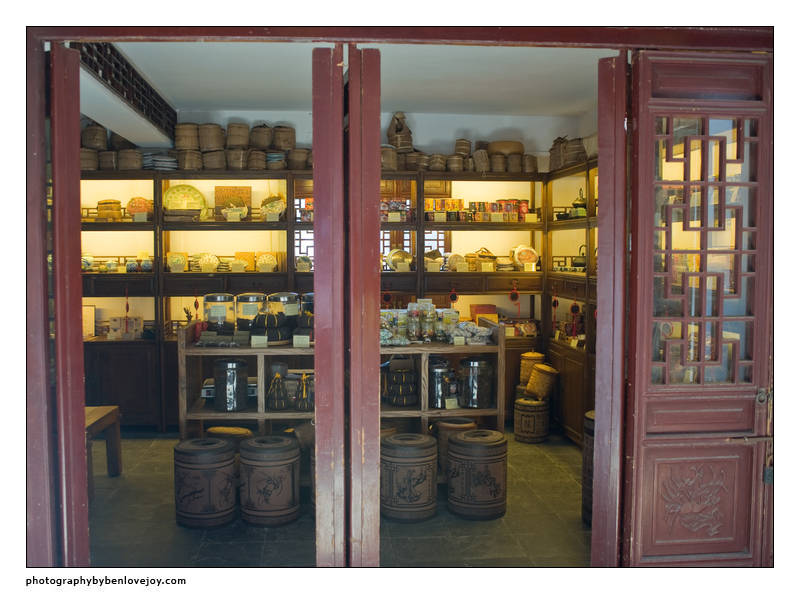
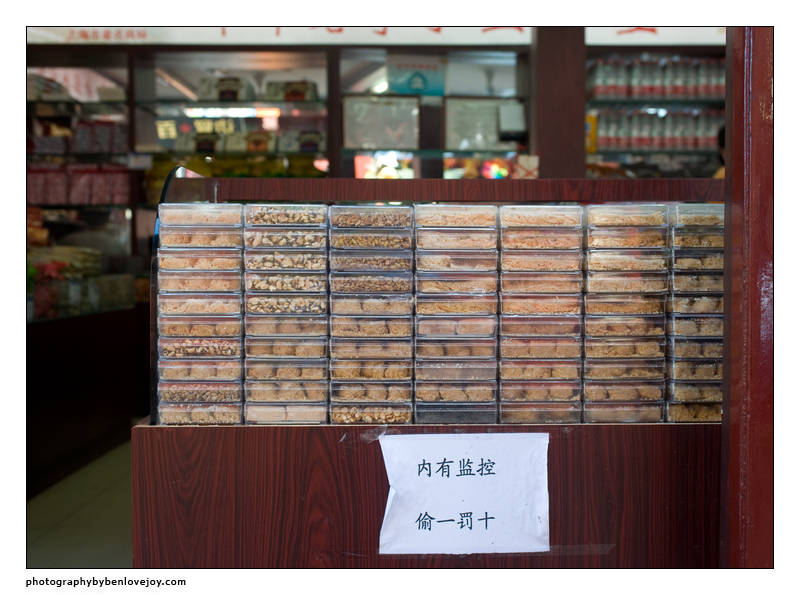
The sort of places that looked, to my uneducated eyes at least, like the shops you might find anywhere: |

And last, but most definitely not least, a huge area devoted to food! |
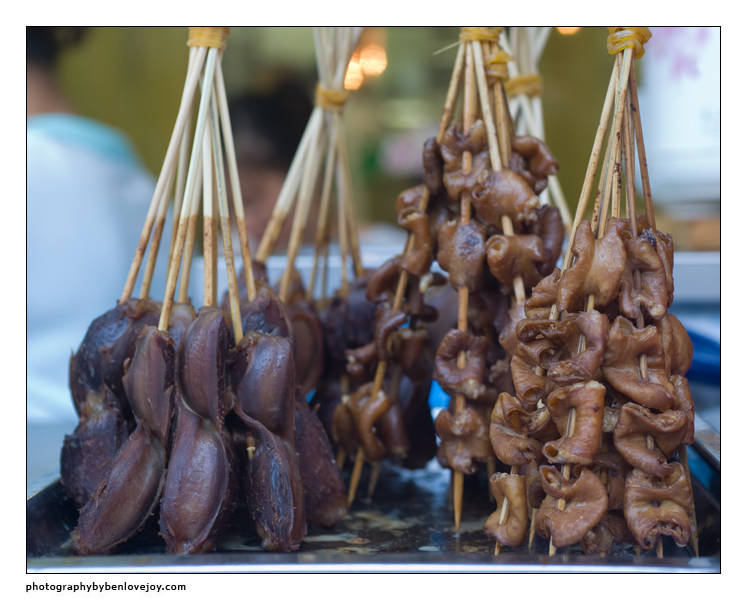
(Chicken gizzards on the left and pig's large intestines on the right, in case you were wondering.) |
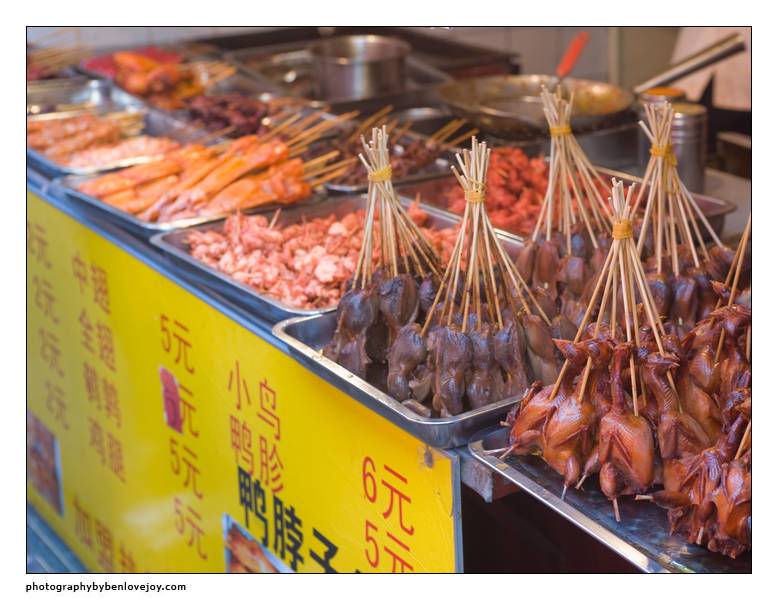
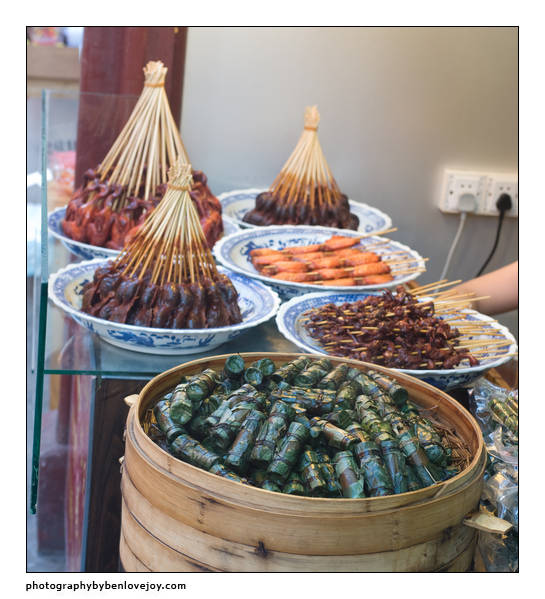
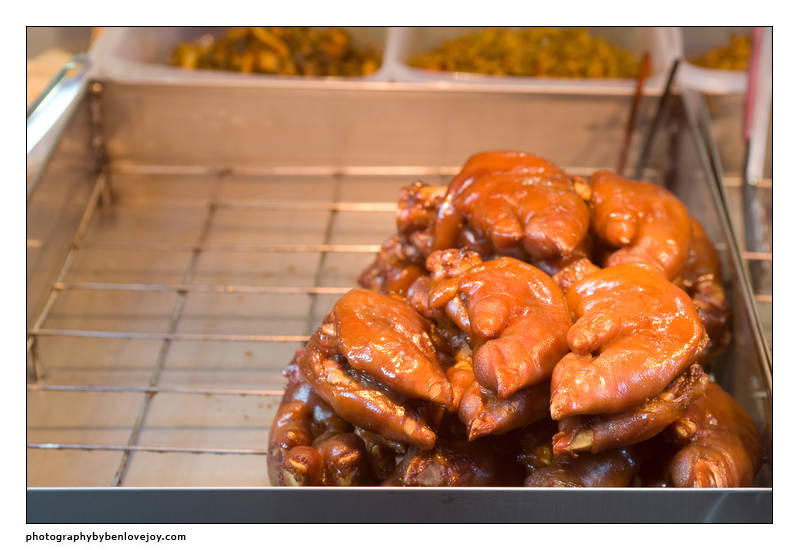
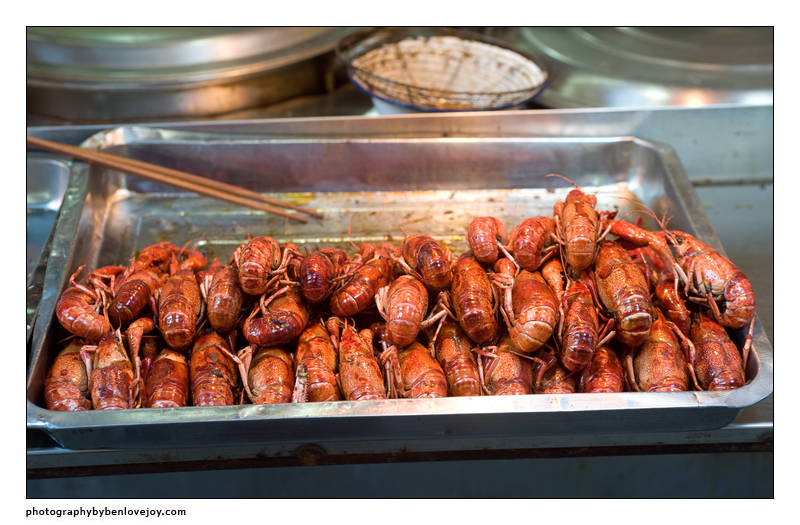
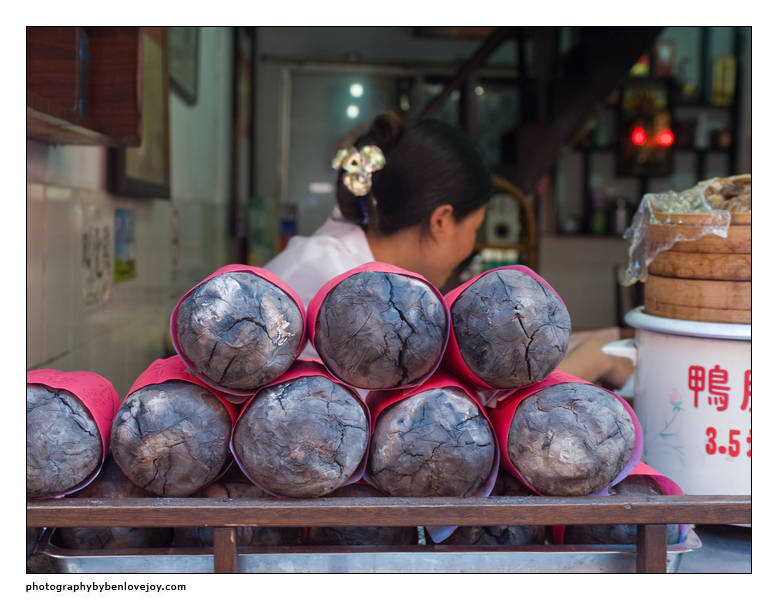
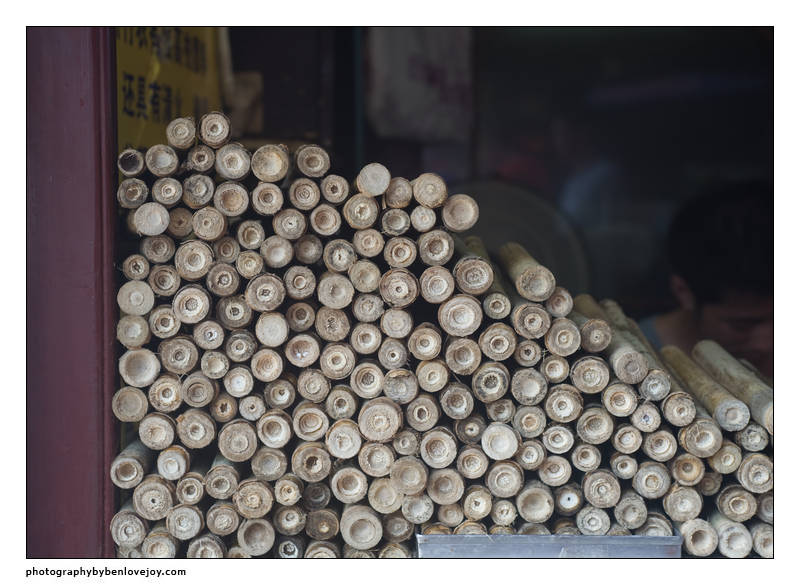

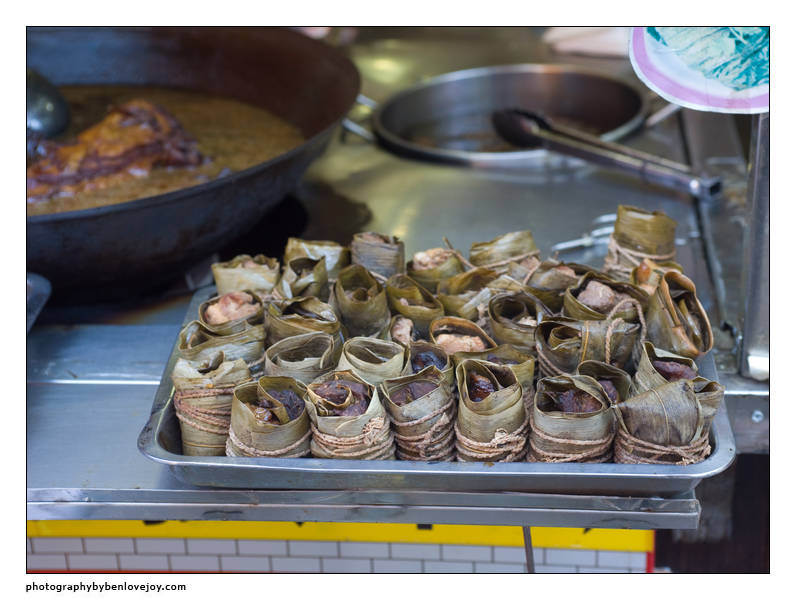
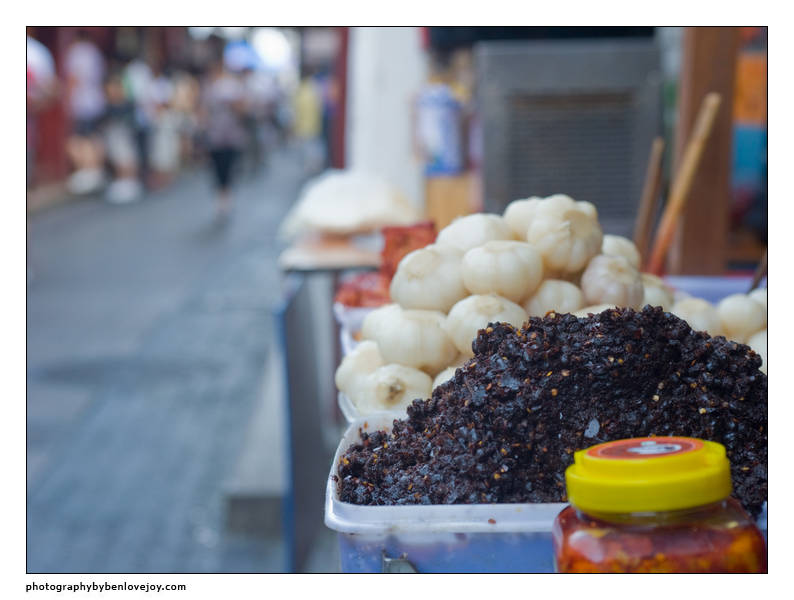

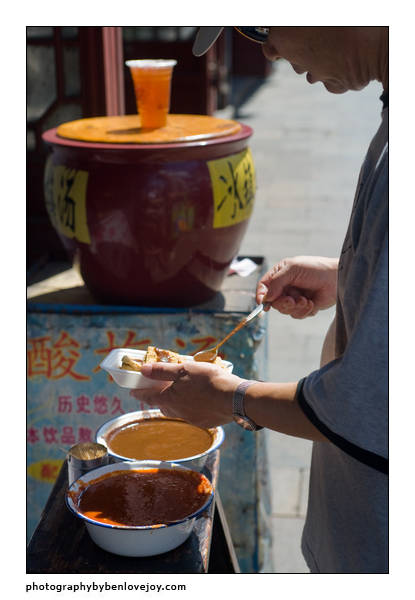
I wasn't always sure what I was eating, but I left the area very well fed indeed. :-) Of course, I cannot survive long without tea: |
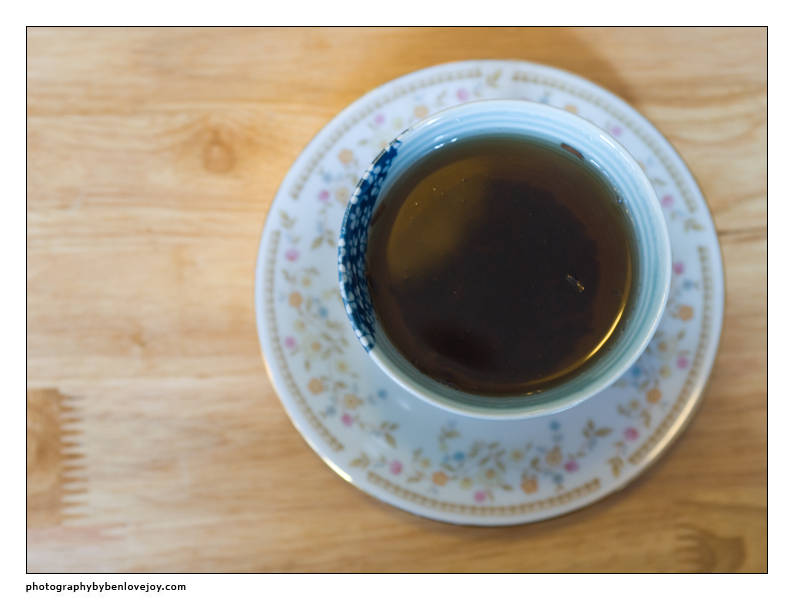
This particular tea-house also sells postcards, and has a huge wall display. You write your postcard, they stamp it then you put it in the slot for the date you want it posted - up to a year in advance. |
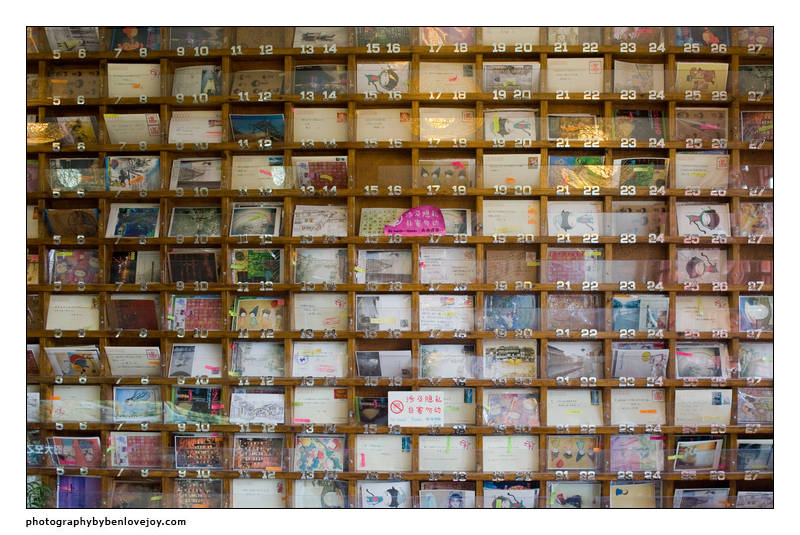
I have a friend who collects postcards, so wrote one and put it in the slot for today. They assured me it would go that afternoon, but don't blame me if it turns up a year later! |
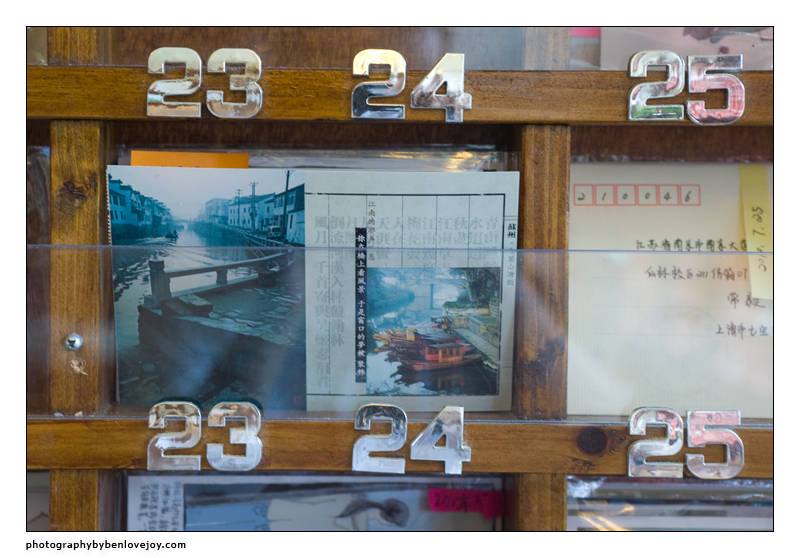
I then headed back into town to scout out a couple of the places I intended to visit after it got dark. The first was East Nanjing Road, which is a hugely popular shopping street, and neon sign central. I did a bit of window-shopping and watched some guys work. |
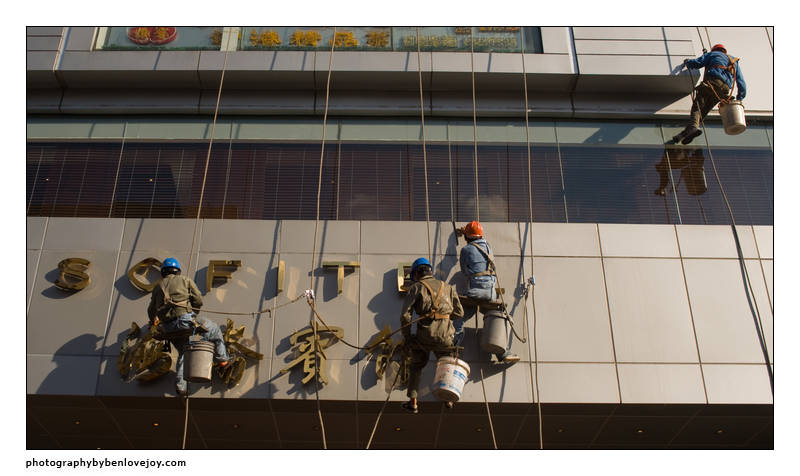
I then carried on down to the Bund. I wanted to get a shot of the waterfront (essentially capturing the same area I'd visited on Wednesday, this time shot from across the river) after dark, but had heard that it got crowded so wanted to scout out a good location and then be there in plenty of time to snaffle a tripod space. I found my spot. It seemed the old saying about Chinese meals was true, so I found a local place to have an early dinner. |
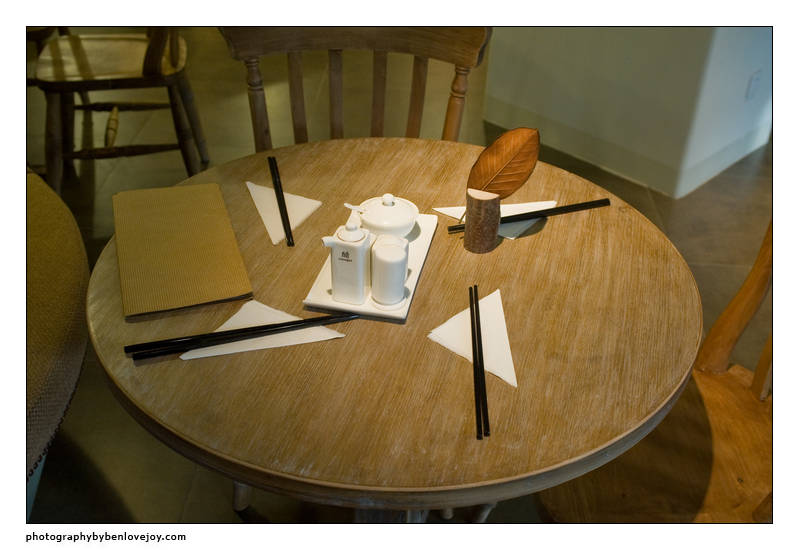

I still had about an hour before sunset, and I figured I only needed to be there 30 mins before, so I wandered a few doors down to a bar for a glass of wine. I decided to be adventurous and try a Chinese wine. |
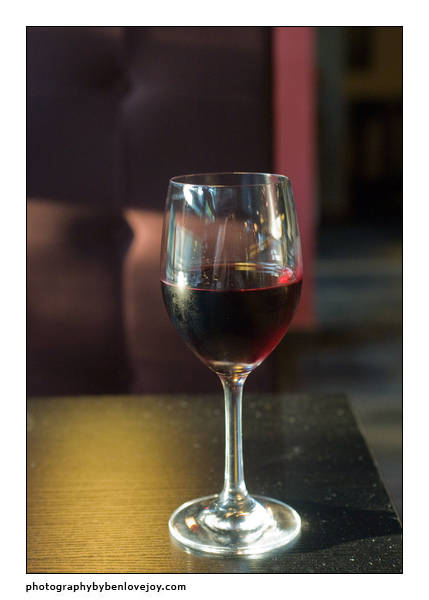
It tasted as you might expect it to. They informed me it was happy hour, and I thus got a second glass free; I turned it down. Think about that for a moment: I turned down a free glass of wine. That gives you an idea what it tasted like. I was, though, able to keep an eye on the light, and I wandered back to my spot 30 mins before sunset. It was lovely standing and watching the sun creep up and off the top of the skyscrapers. As darkness fell, and the skyscrapers came alive with light, I took a series of photos so I could choose the best light later. Usually I have no problem narrowing it down to a single one, but this time I couldn't choose between two. Help me out here, please - lighter or darker? |

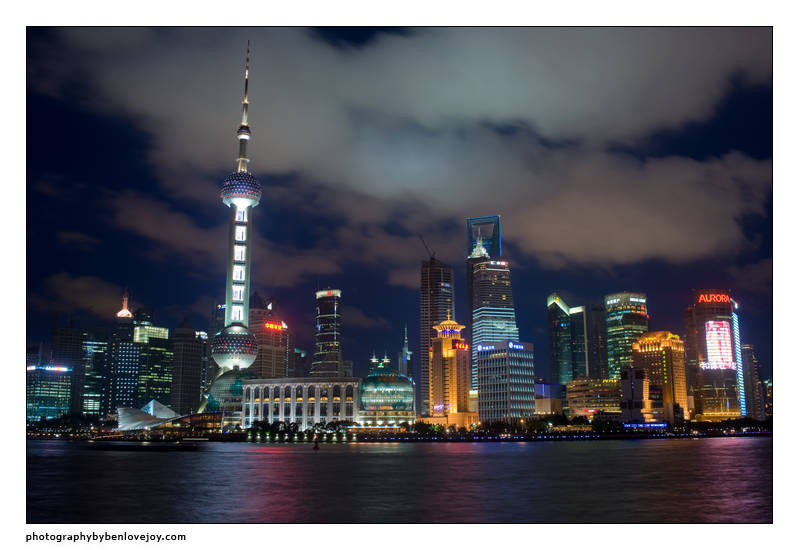
Looking at it, it was hard not to think that Lost in Translation was filmed in the wrong City ... Here's a wide view down the river: |
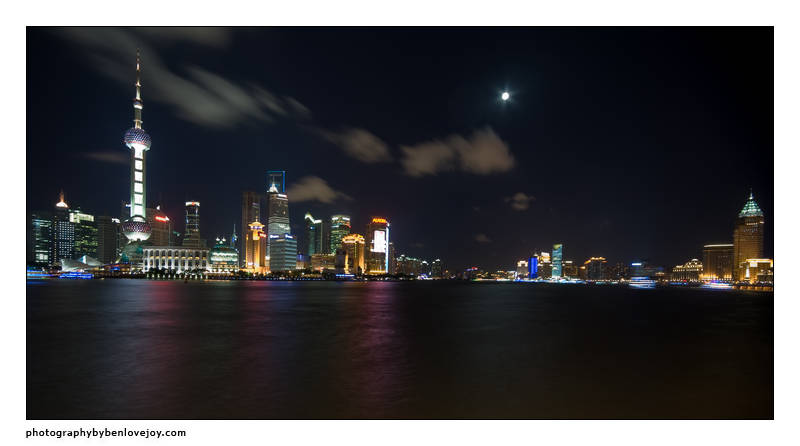
I walked back up East Nanjing Road, but the crowds were just unbelieveable. I couldn't have even found a spot to put my tripod down, let alone stood any hope of it standing for 30 seconds without being jostled. I got out of there fast! The Yangpu Bridge was supposed to have a light display every 15 minutes in honour of Expo 2010. I had seen it in the distance from the Bund, so grabbed a cab to find a viewpoint close to the bridge. My hotel had mistranslated the name of the bridge, so the cab journey was a little entertaining, but eventually I communicated the idea that I just wanted him to follow the river thataway and I'd let him know where to turn off. After one false start, we ended up at the Qichangzham Ferry Pier, where the staff kindly allowed me onto the quay, I set up my tripod with my camera pointed at the bridge and waited. And waited. And waited. You kind of expect a Chinese 15-minute schedule to be even more precise than a German one, but after 25 mins I had to assume they'd switched it off for the night. It wasn't a wasted trip, though, as I just turned my camera around to take this: |
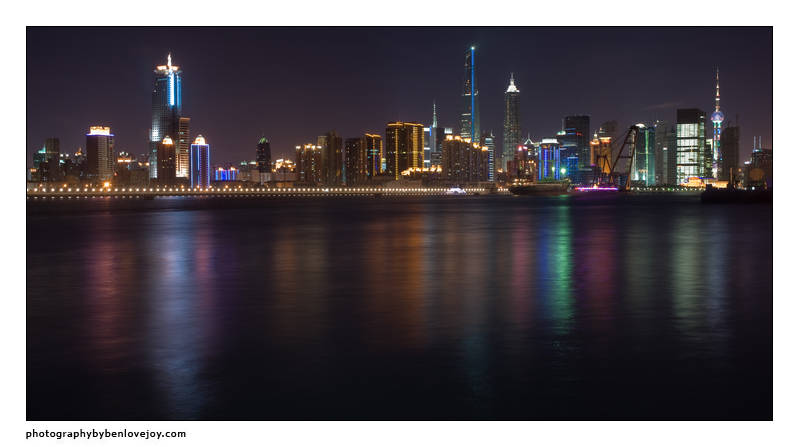
And that concluded my Shangai trip. I was very glad indeed to have finally managed to actually see something of the place. |
![]()